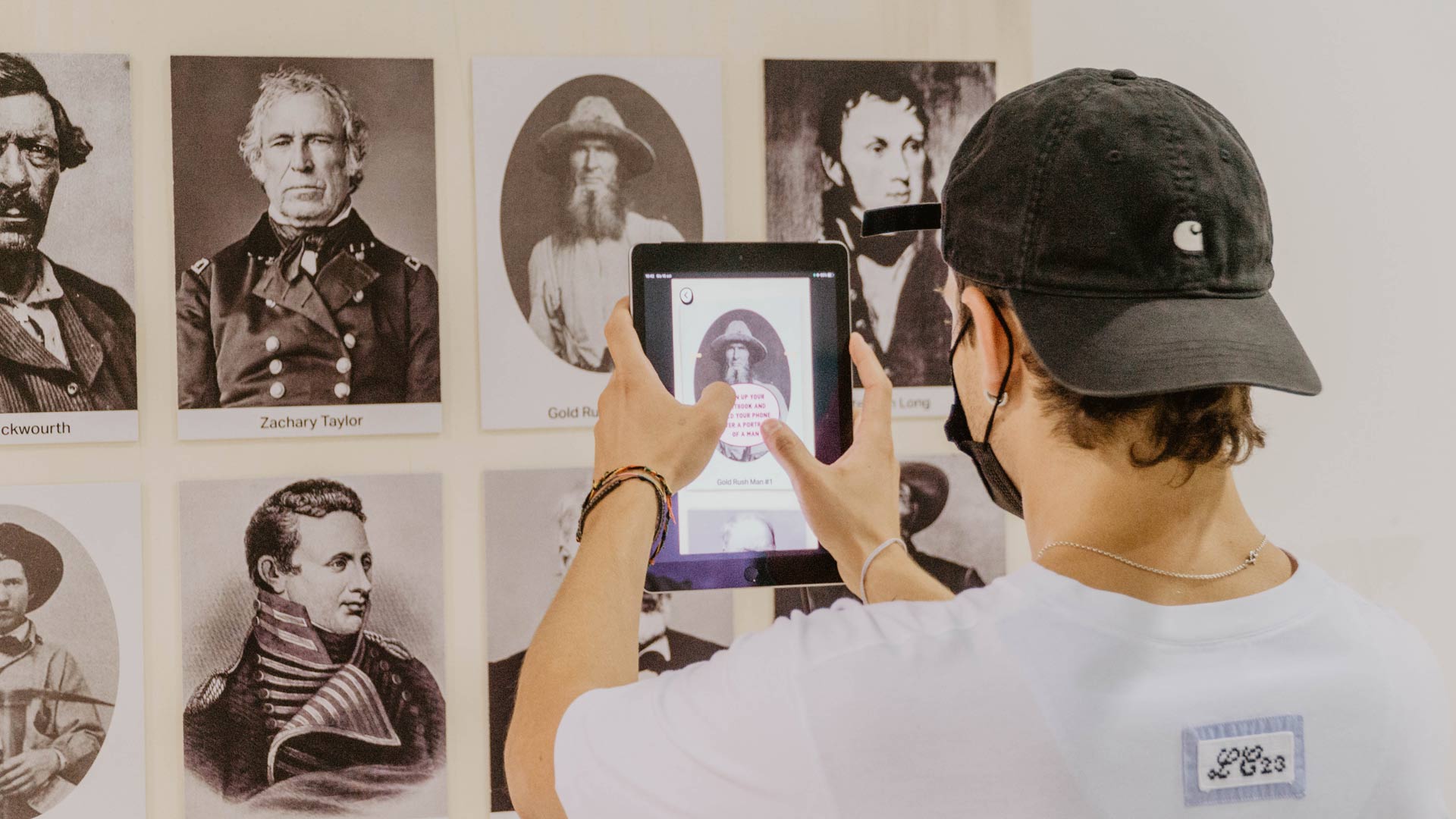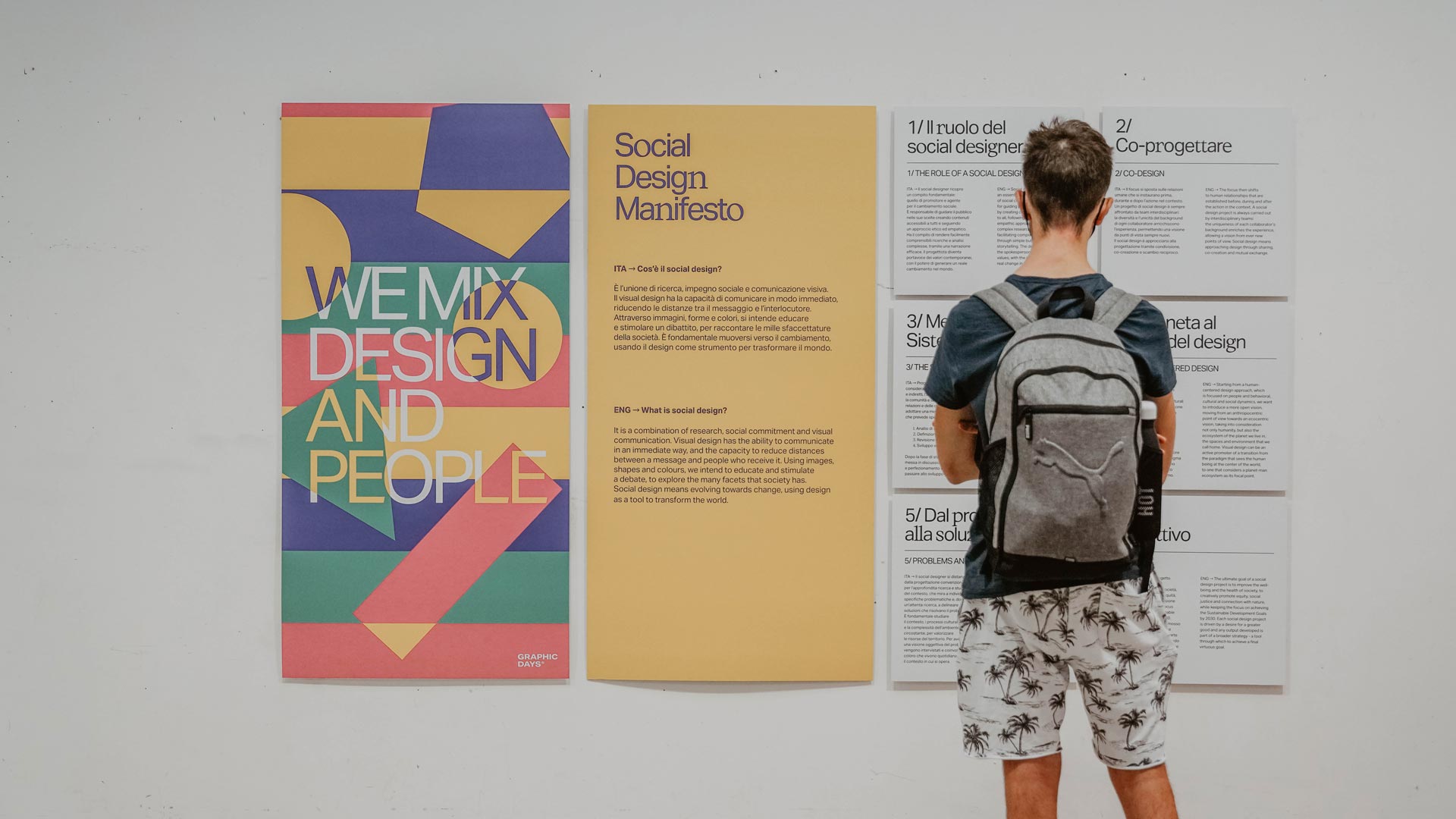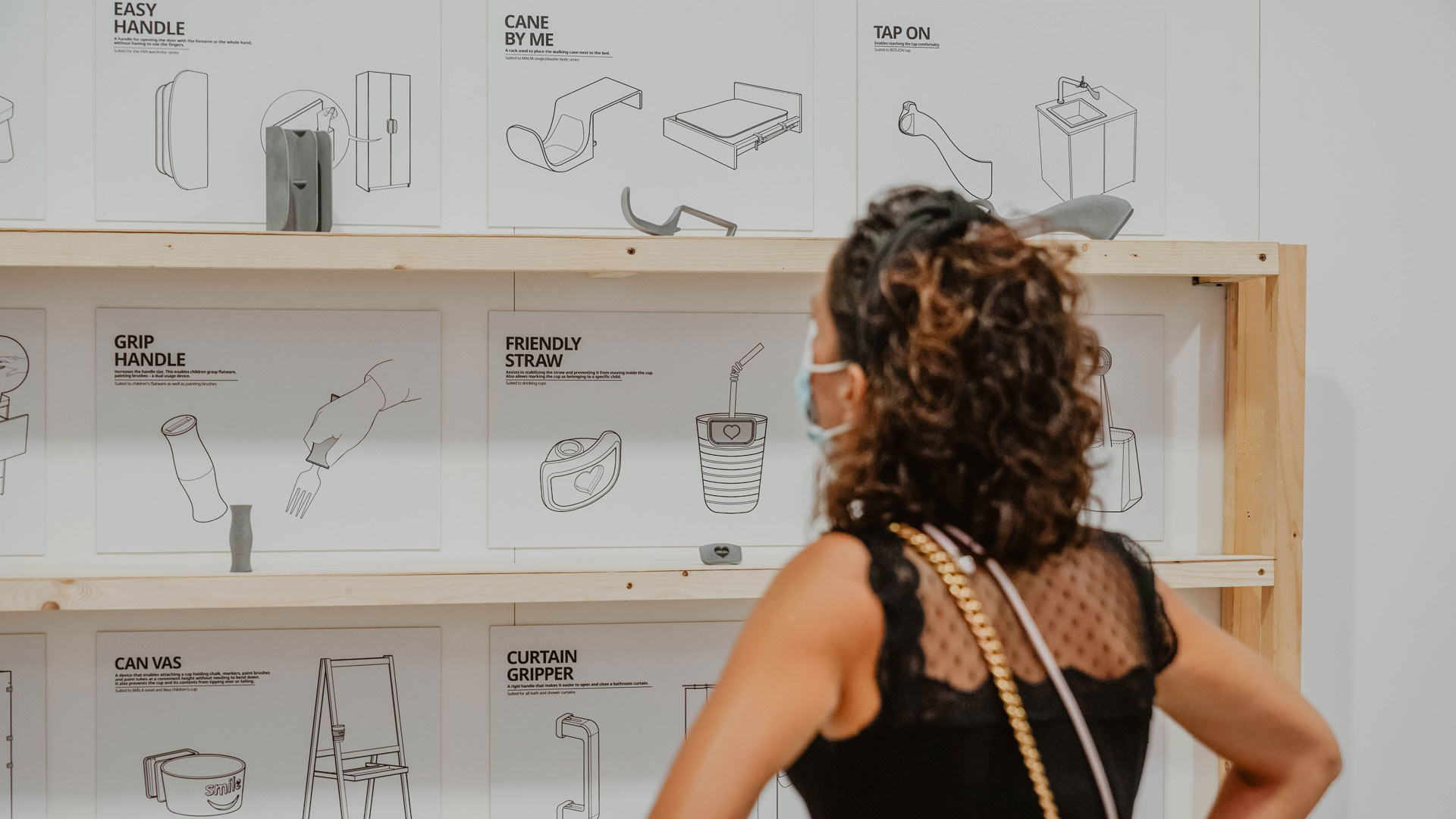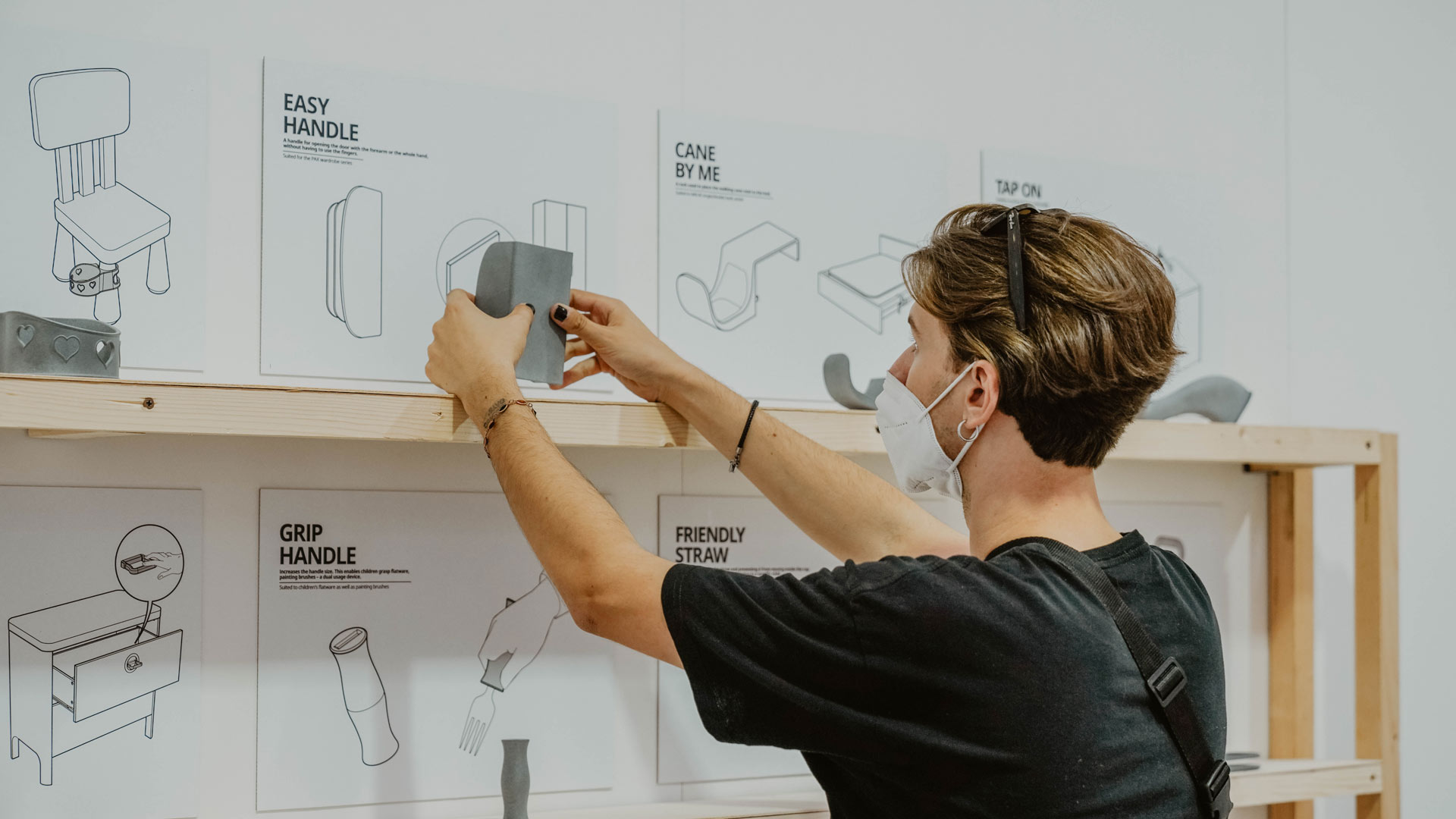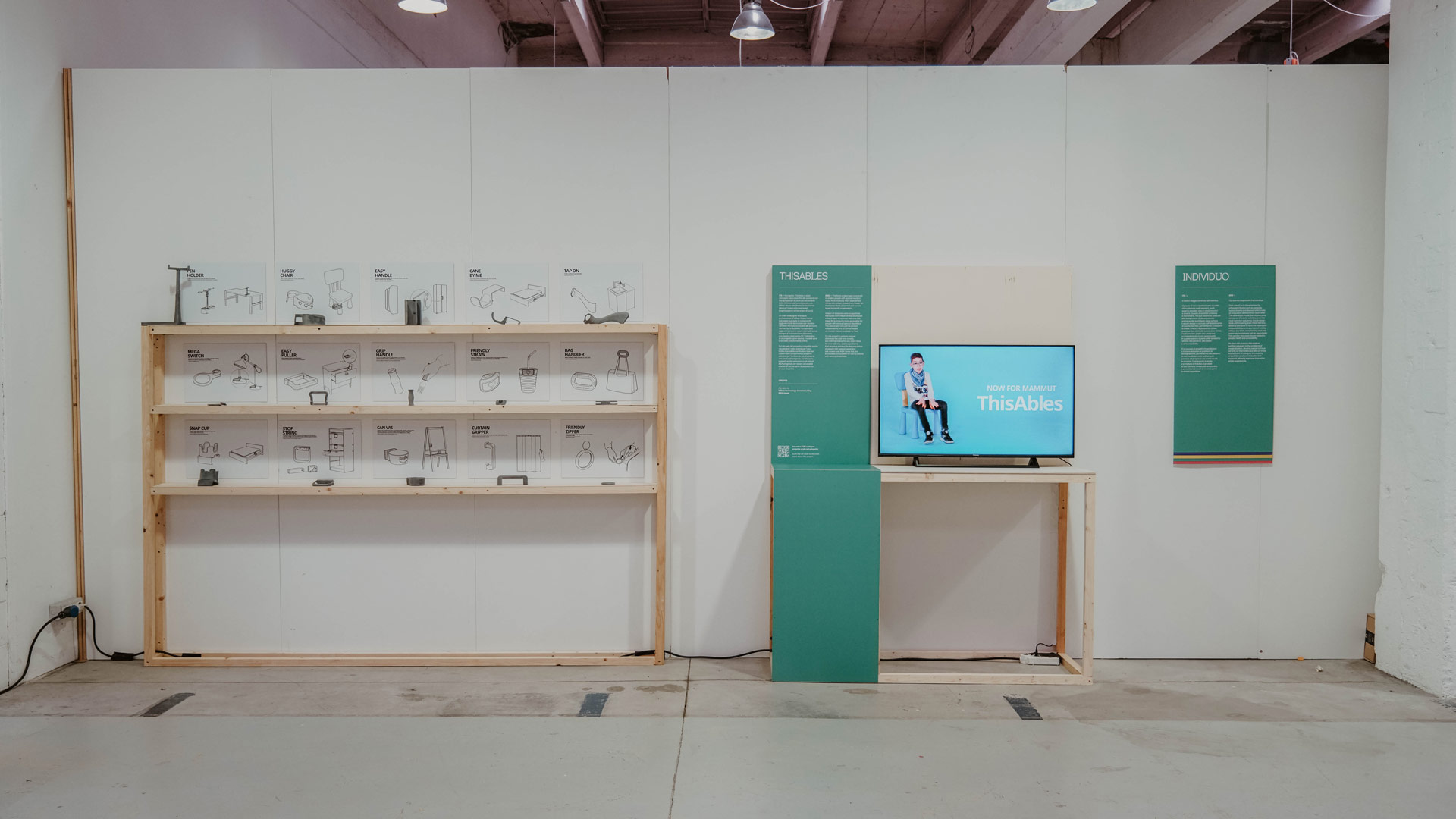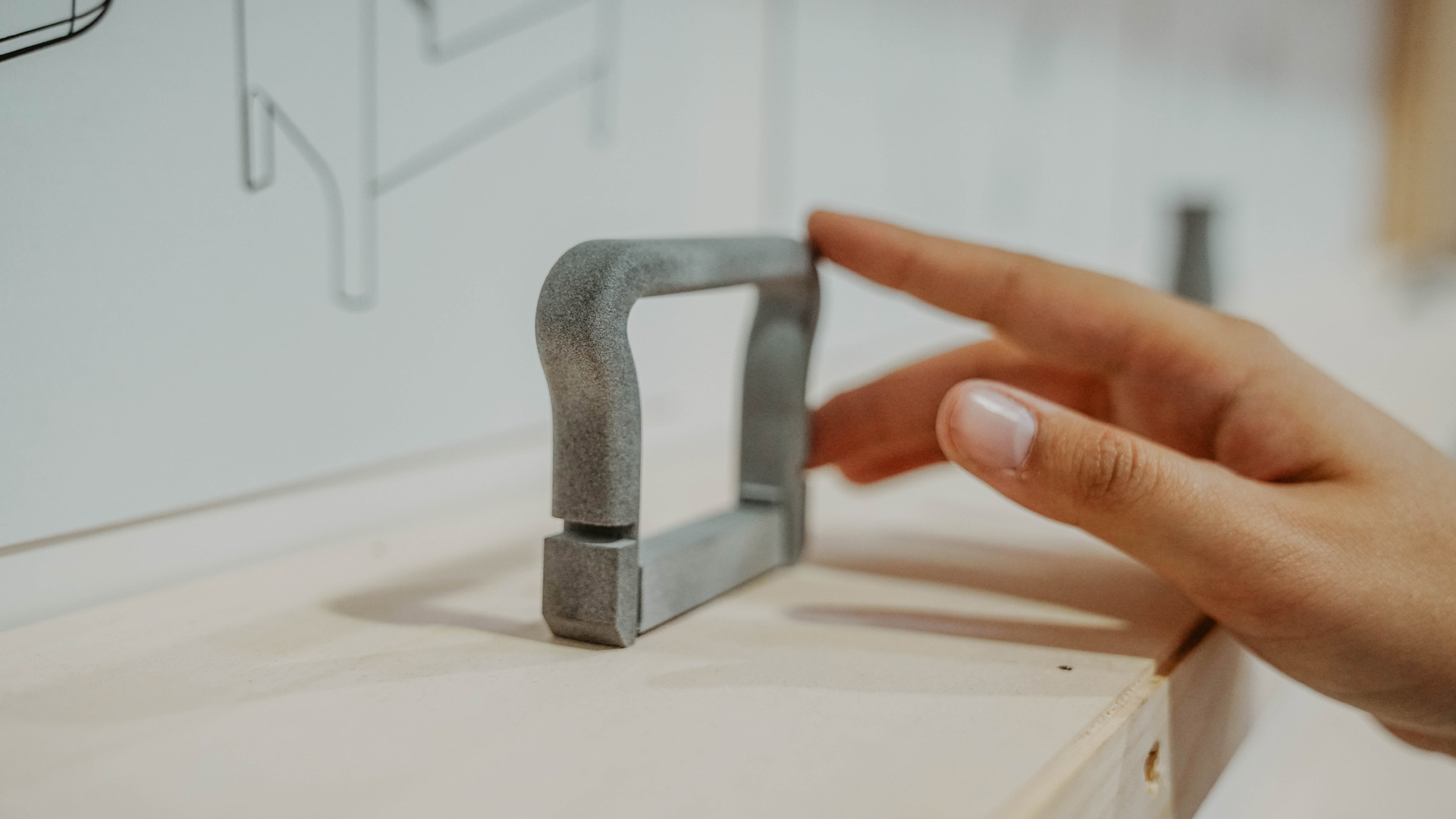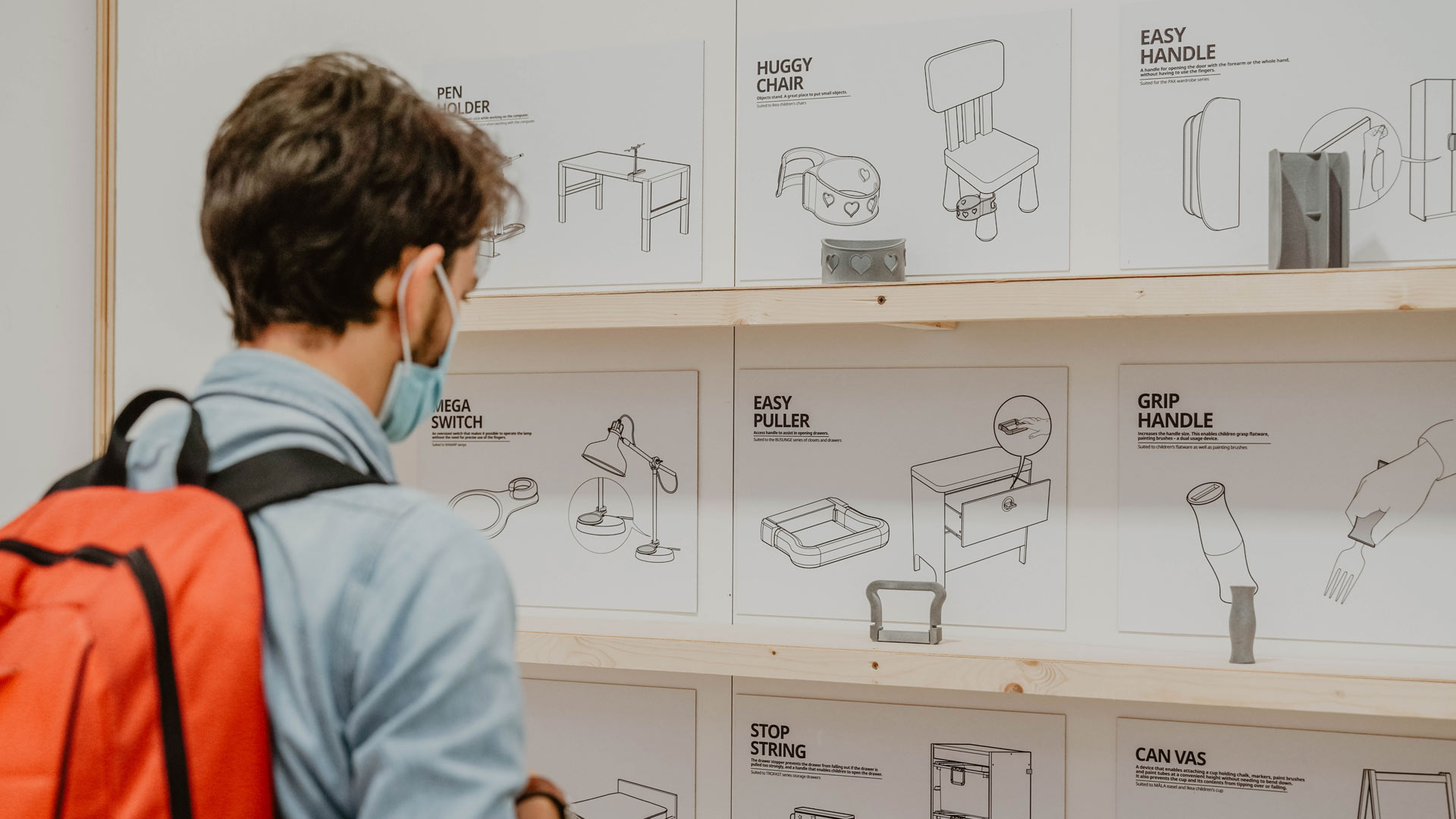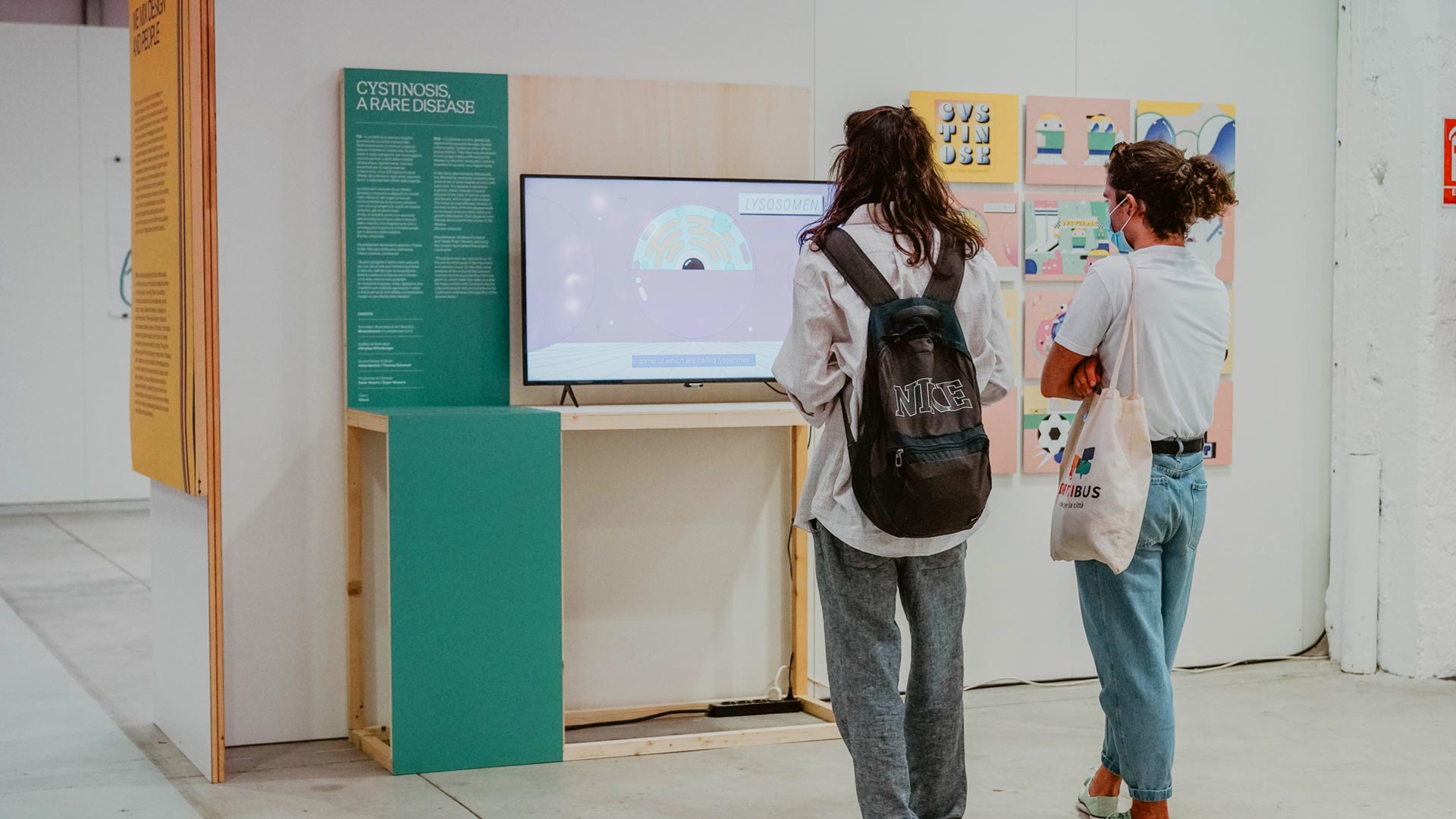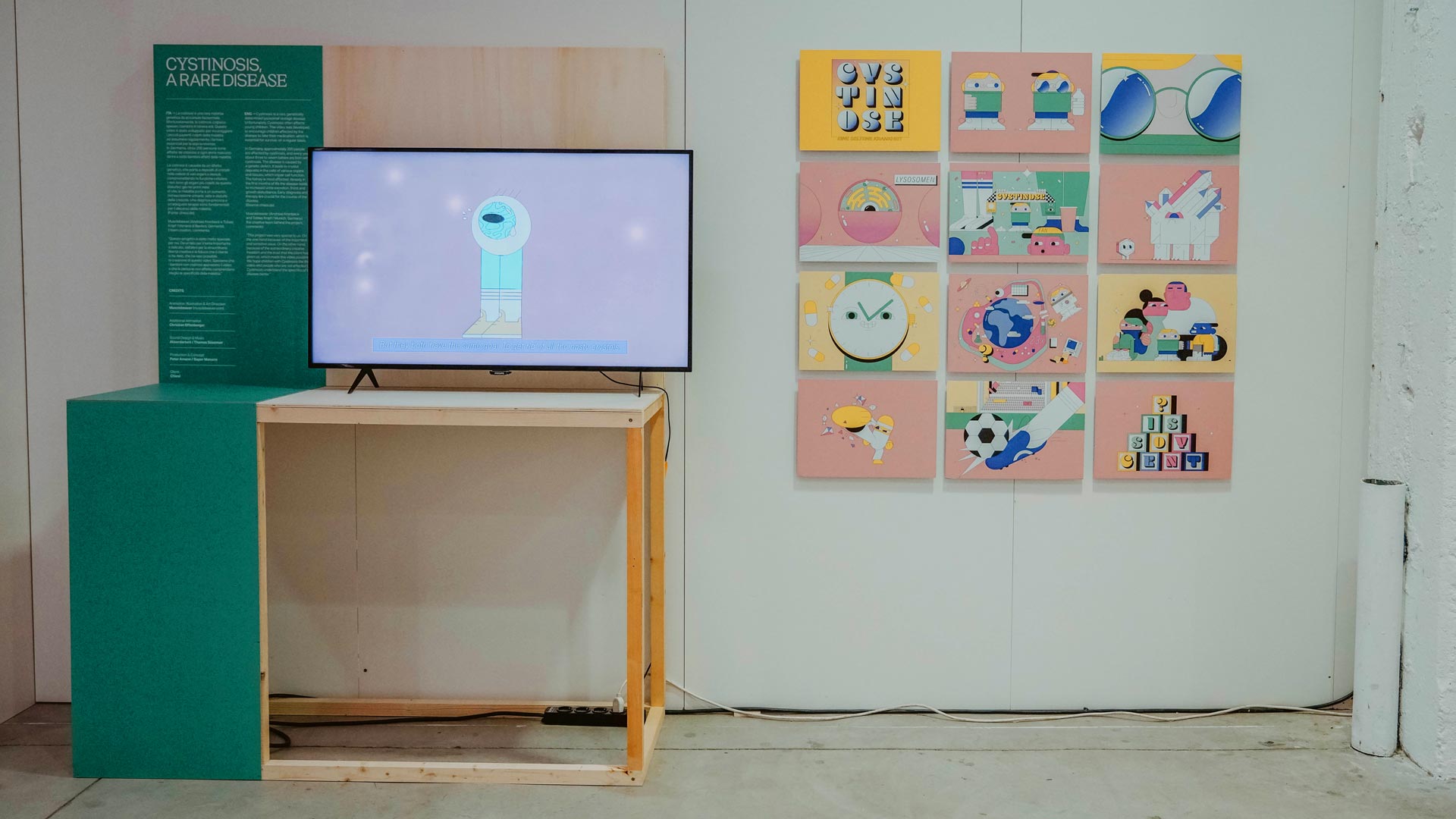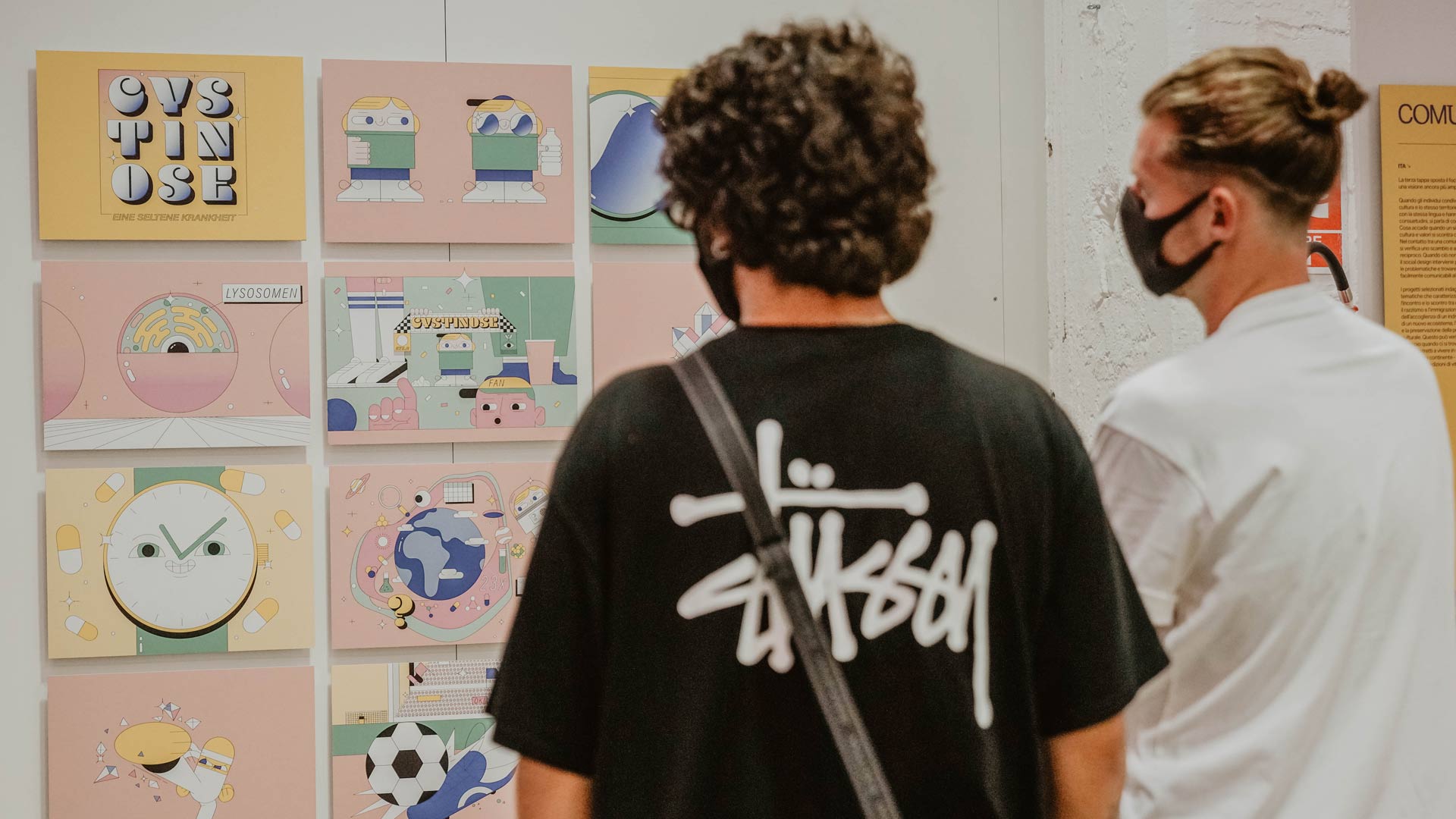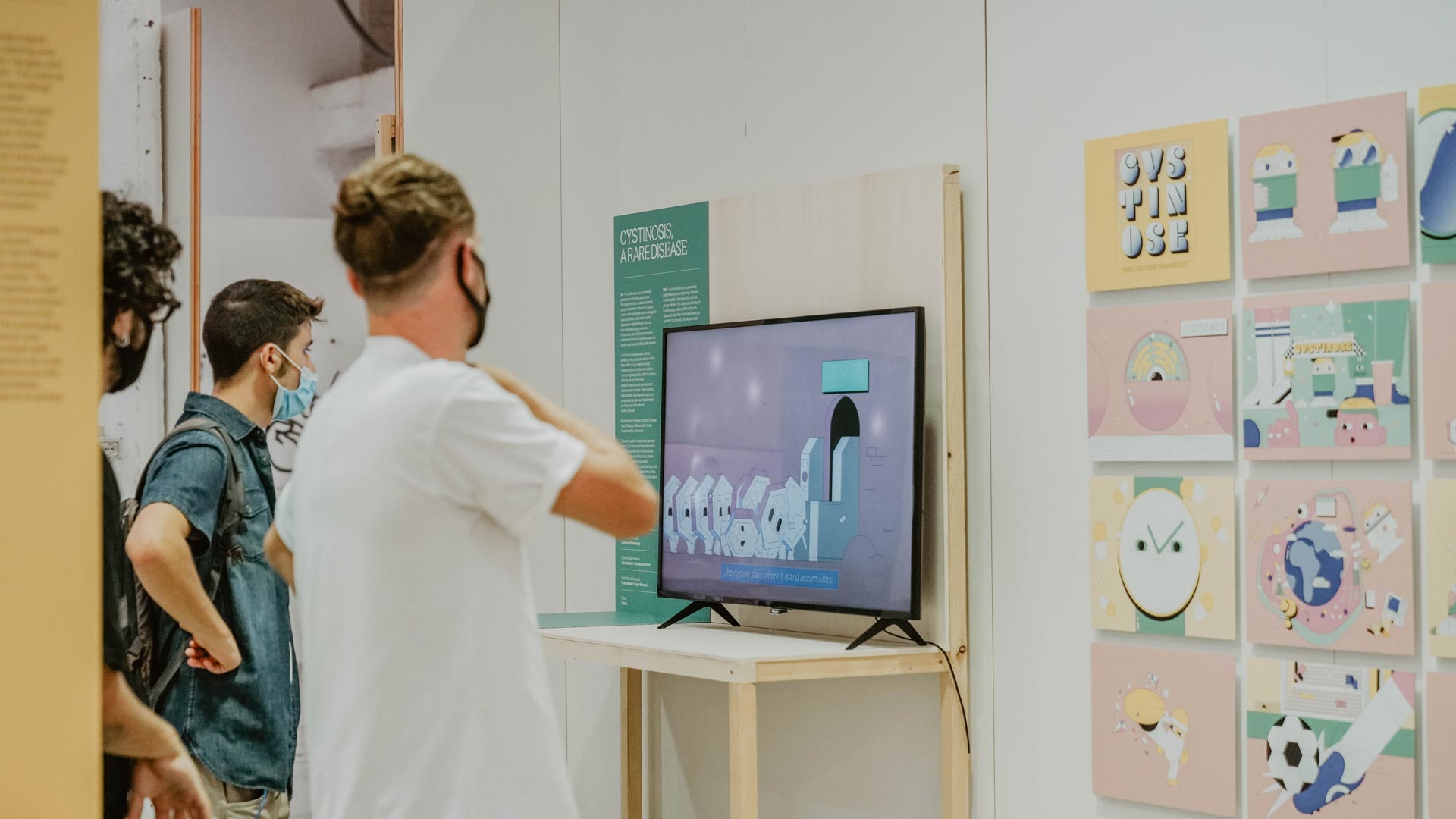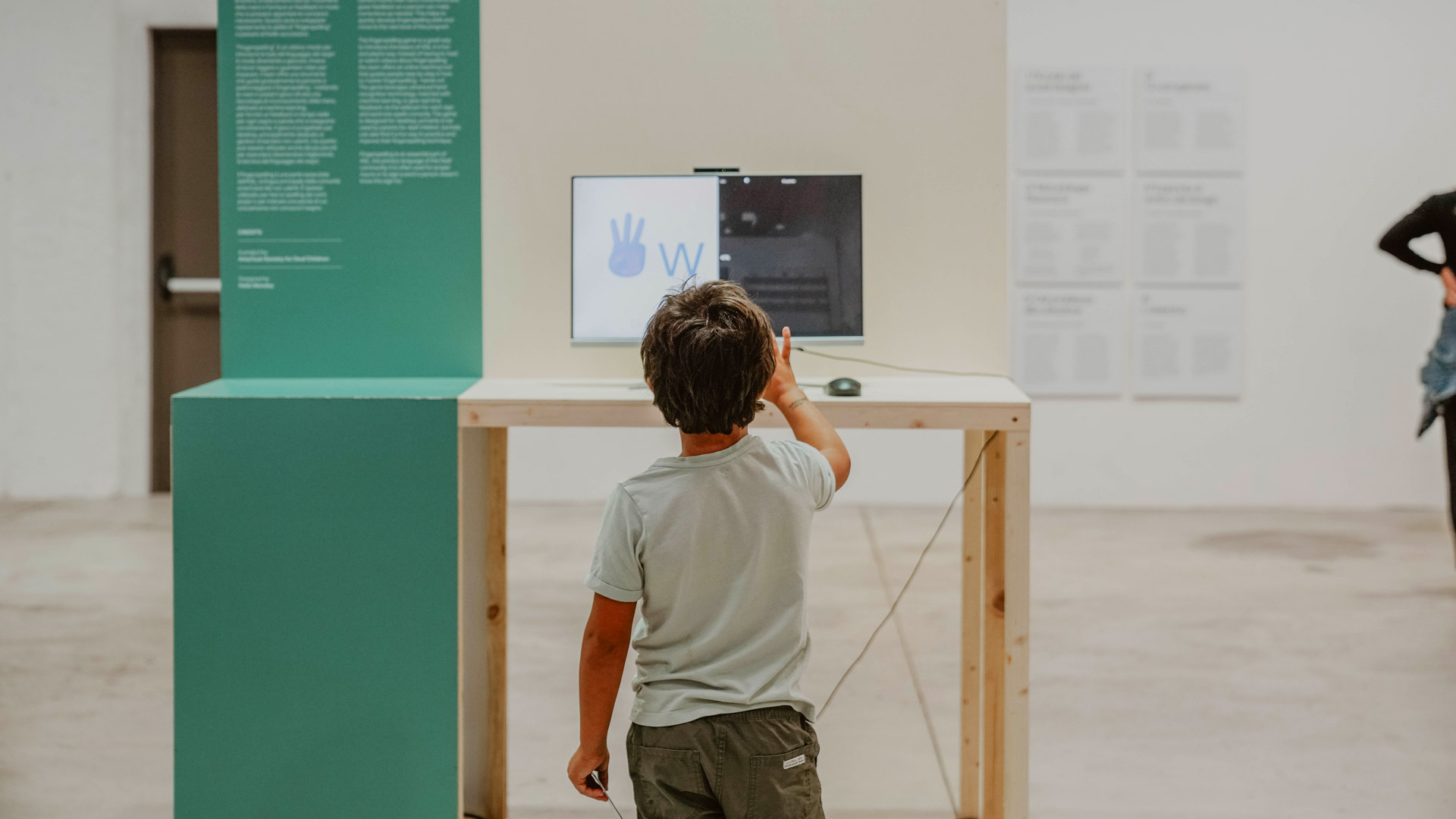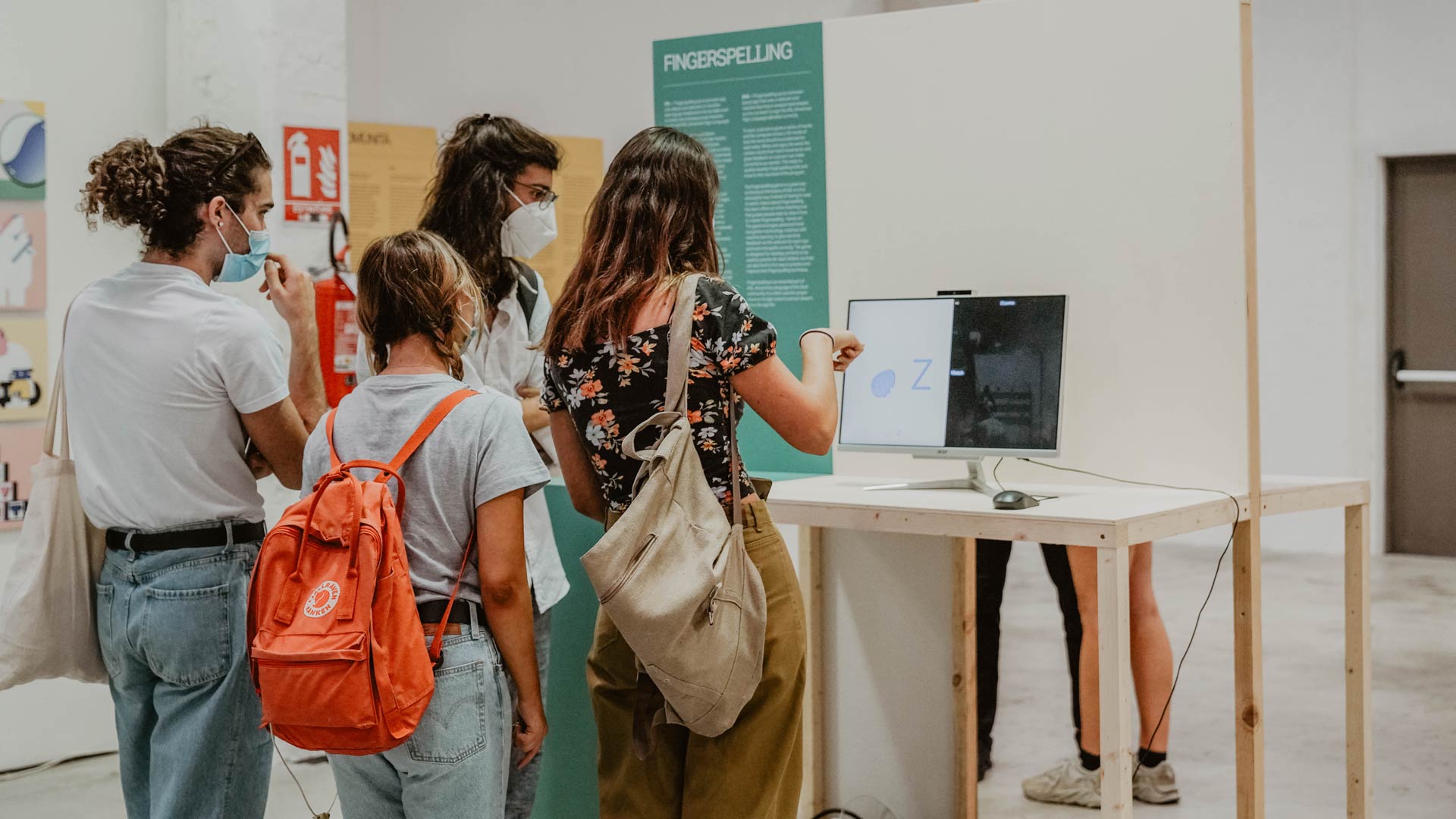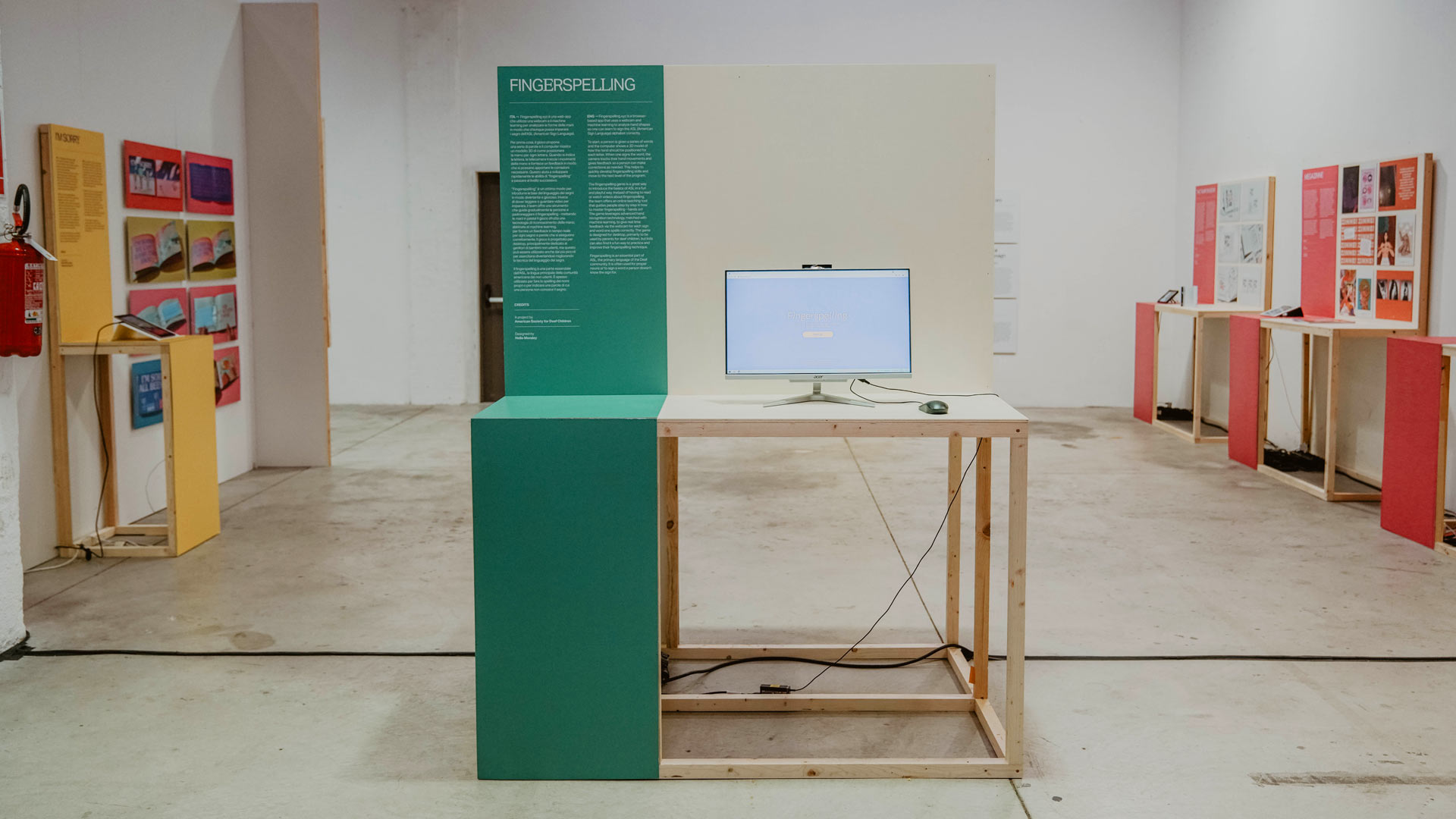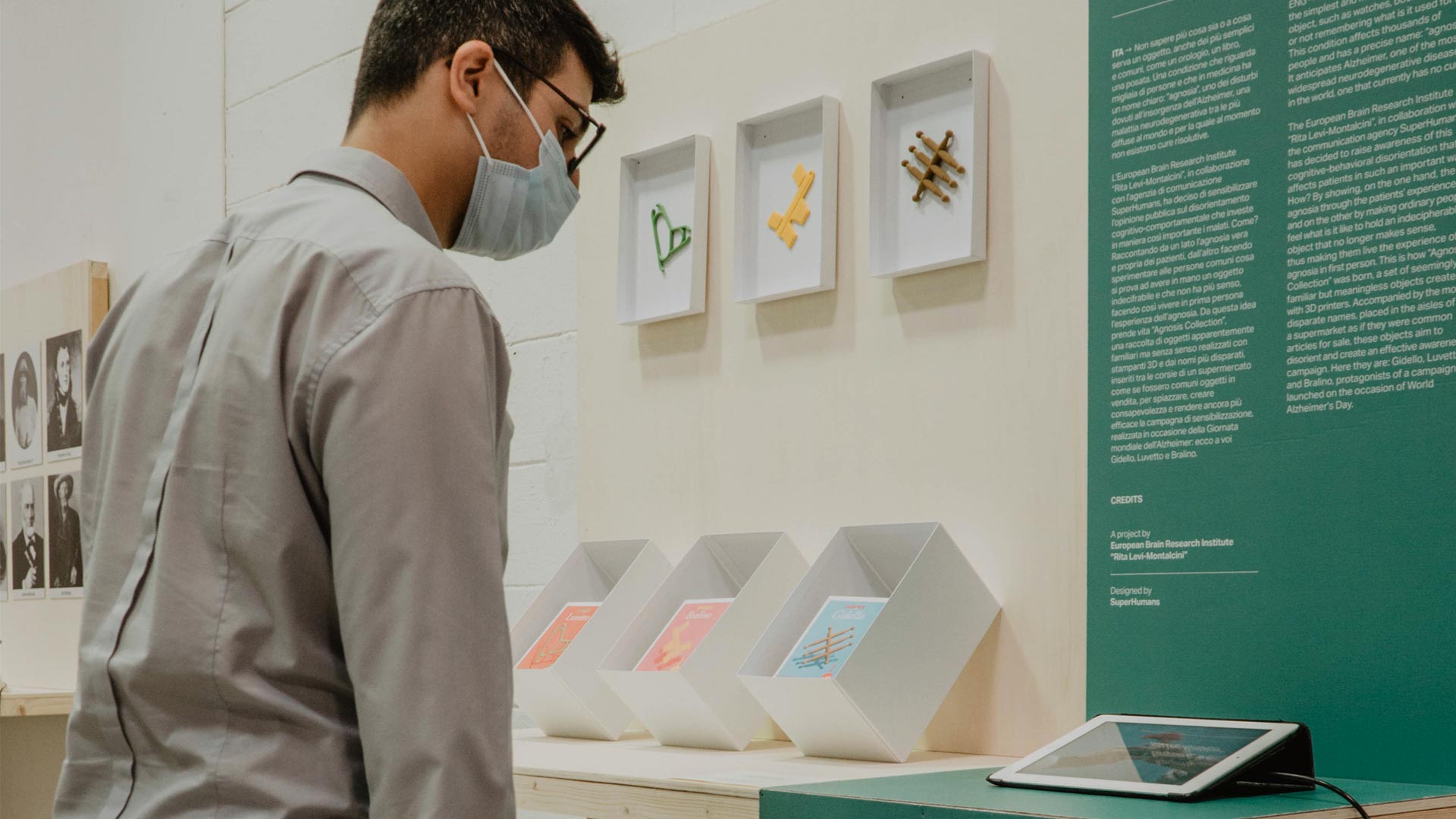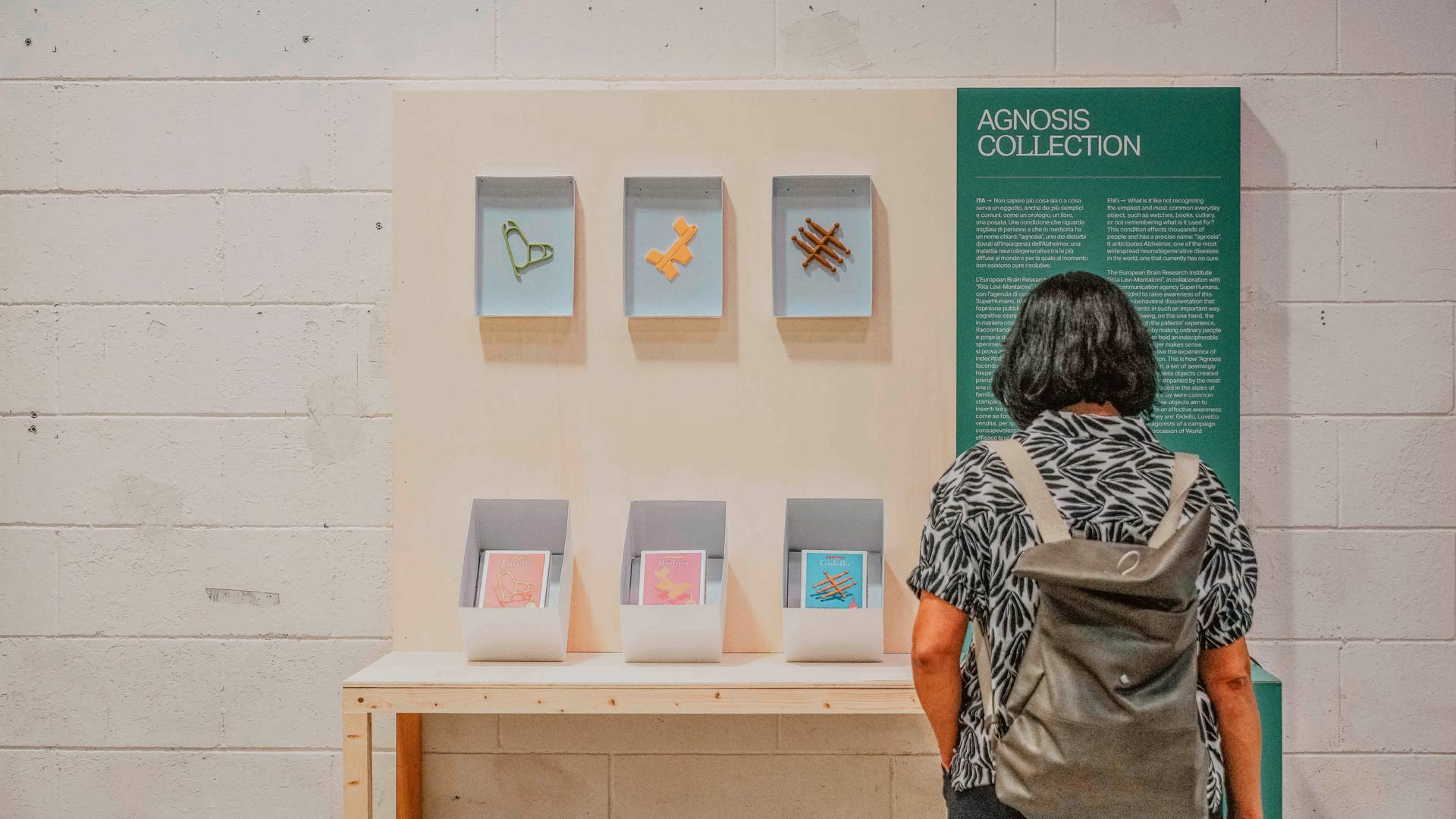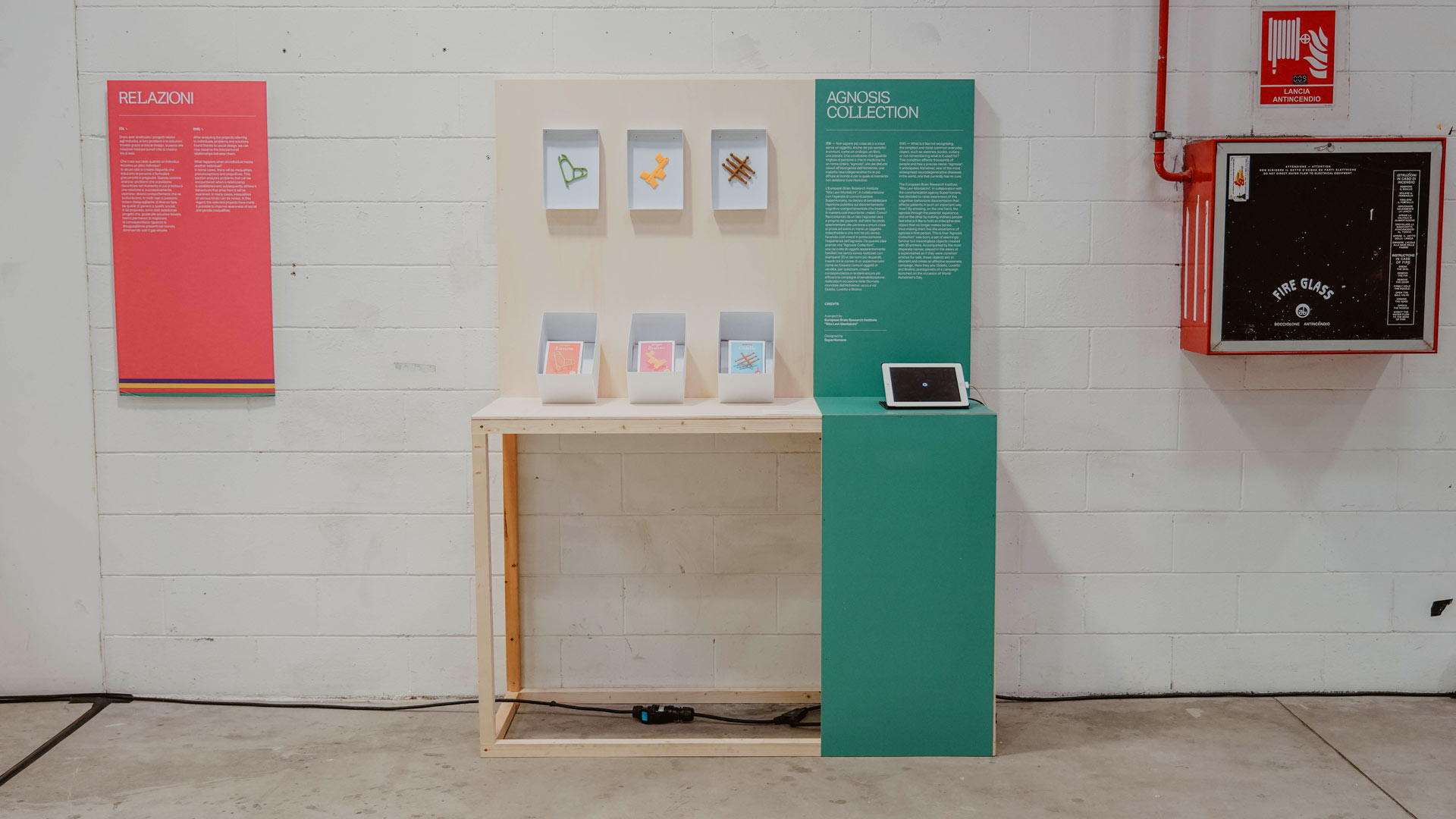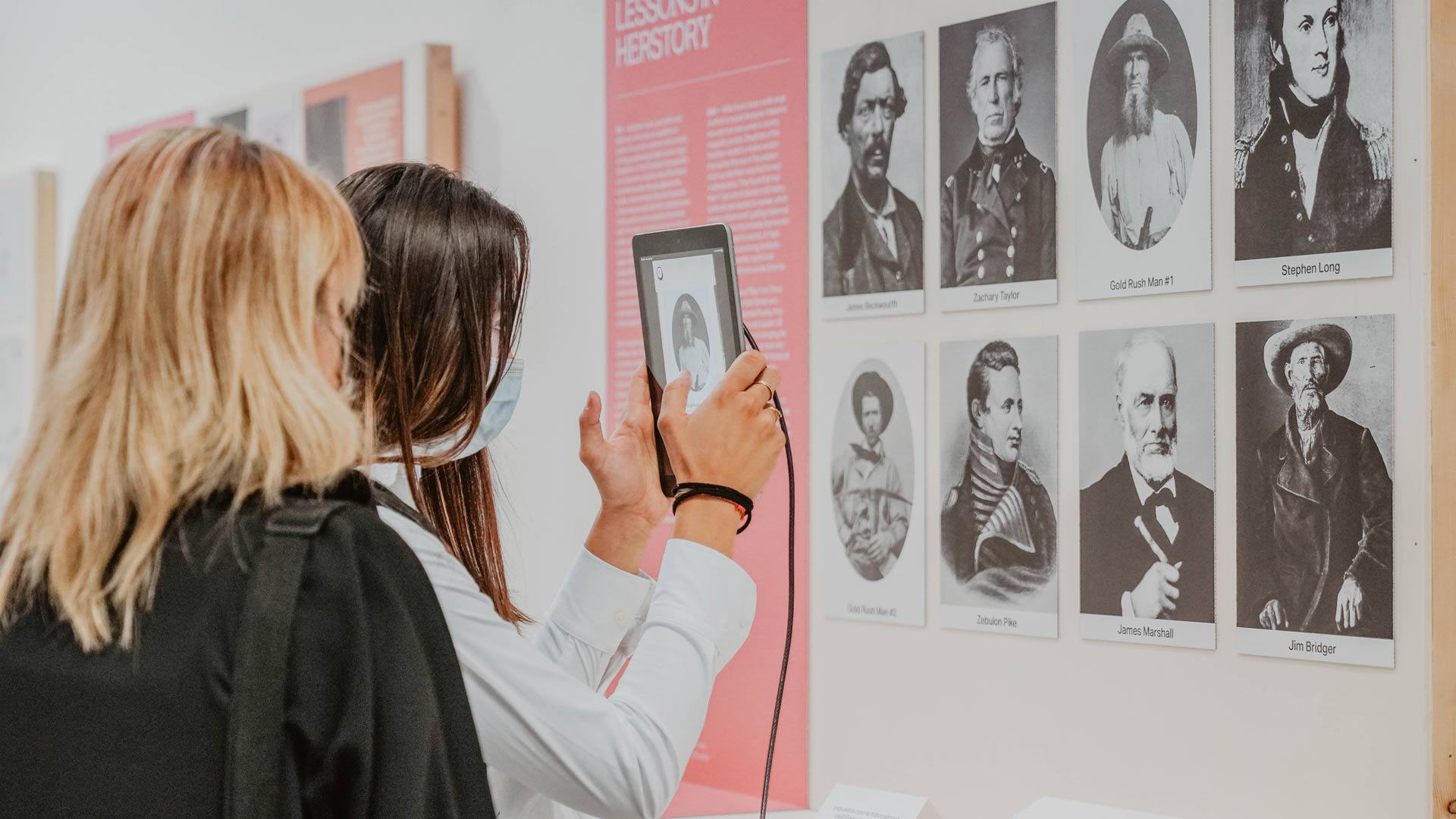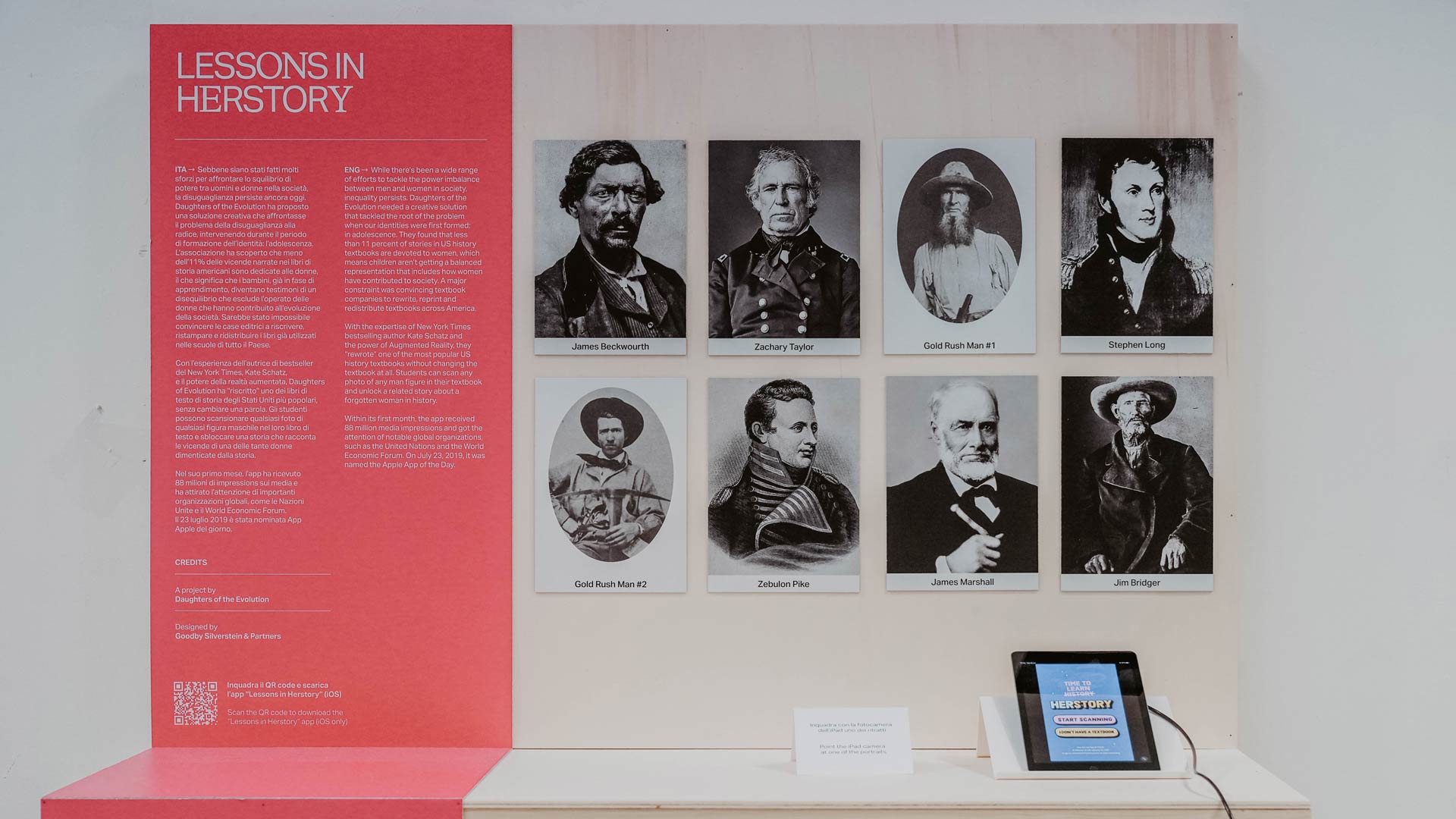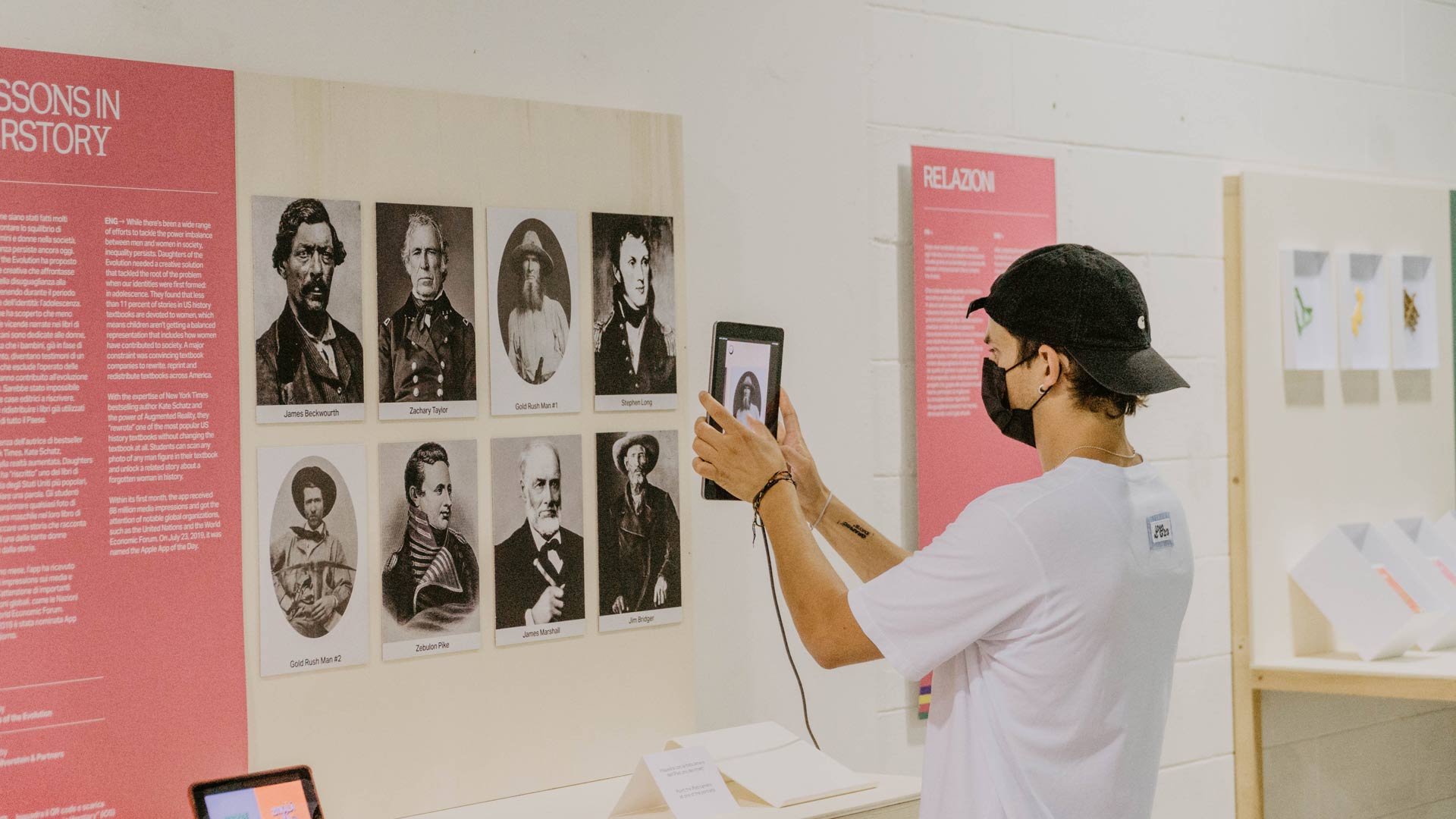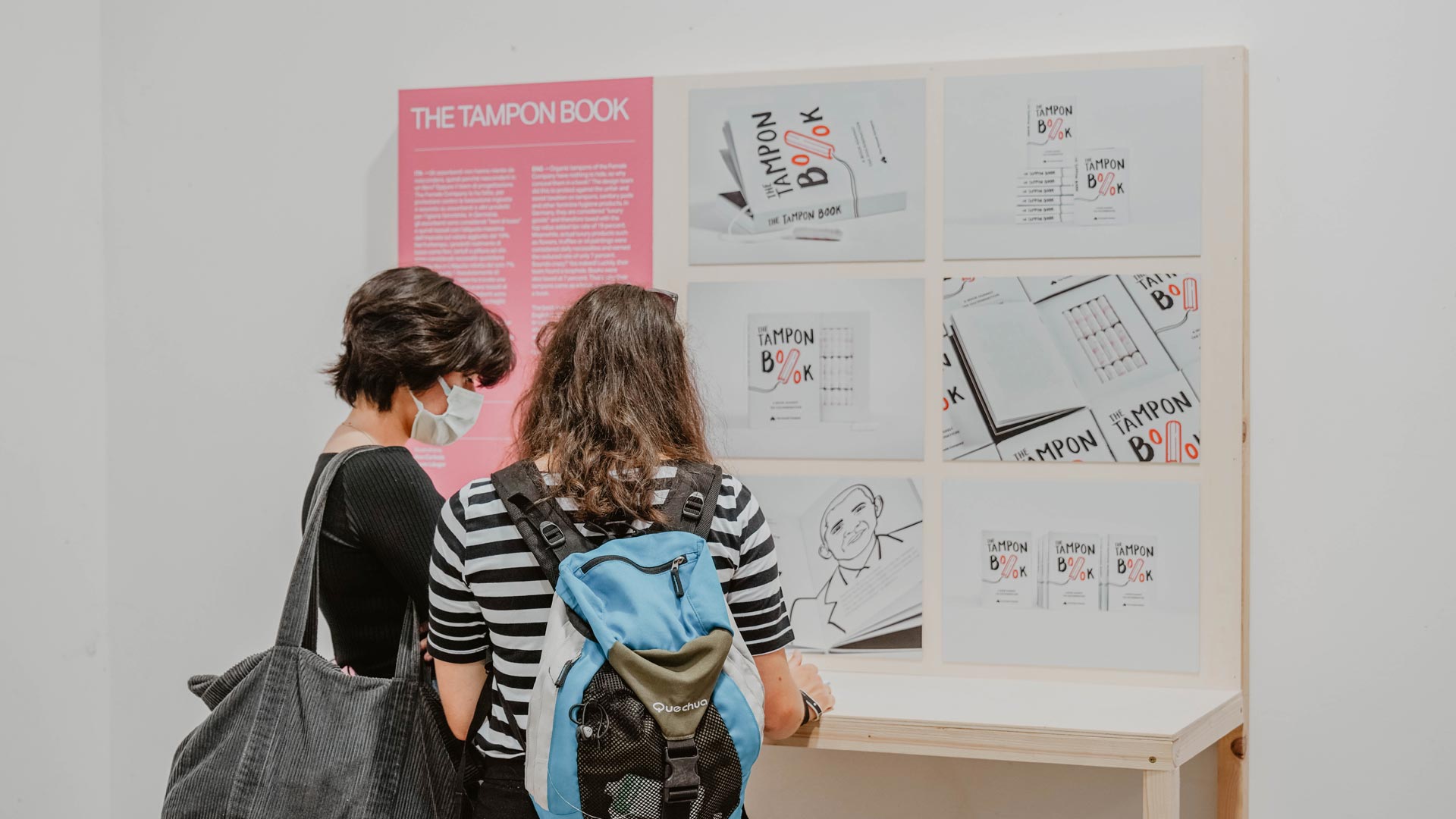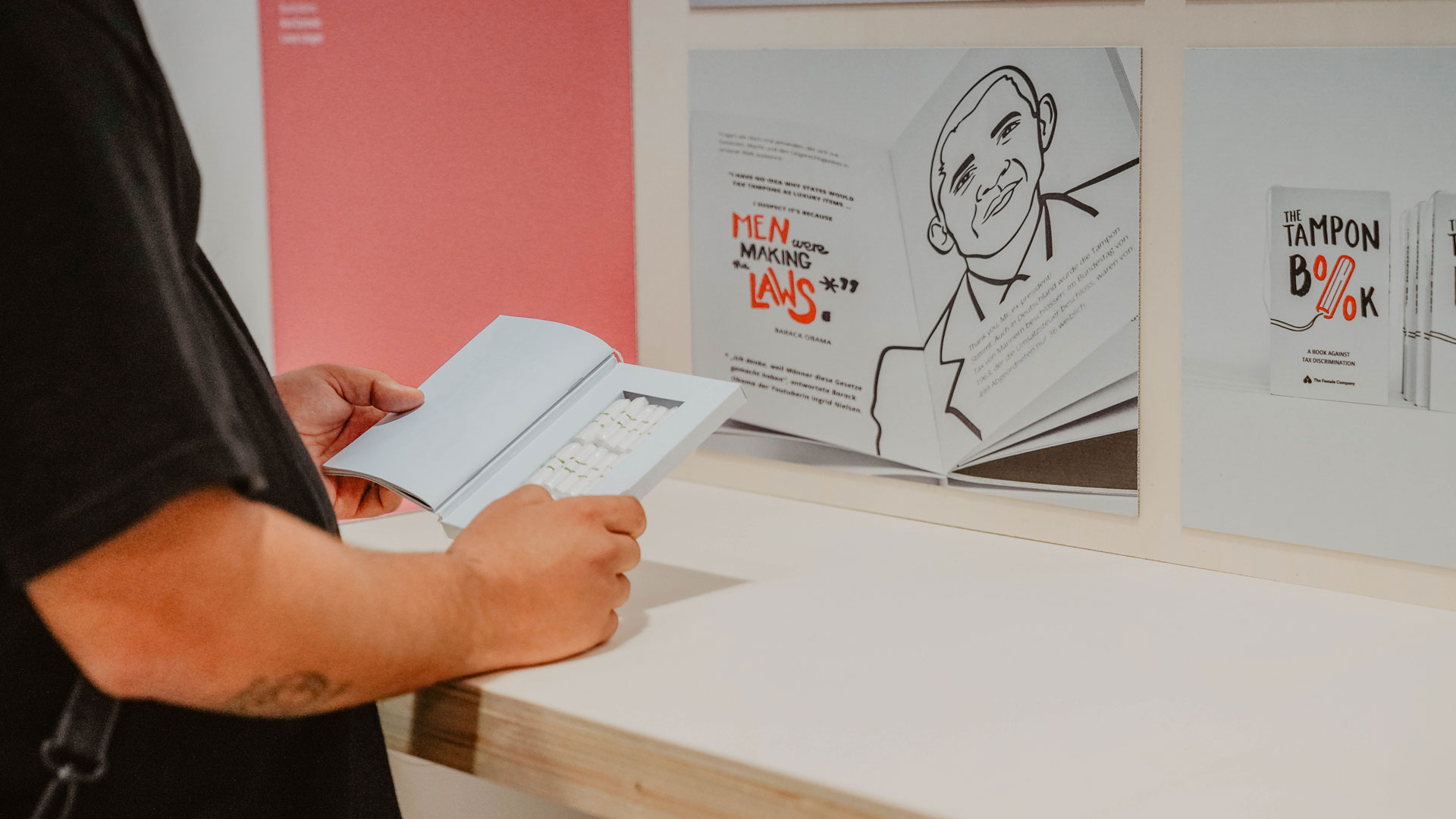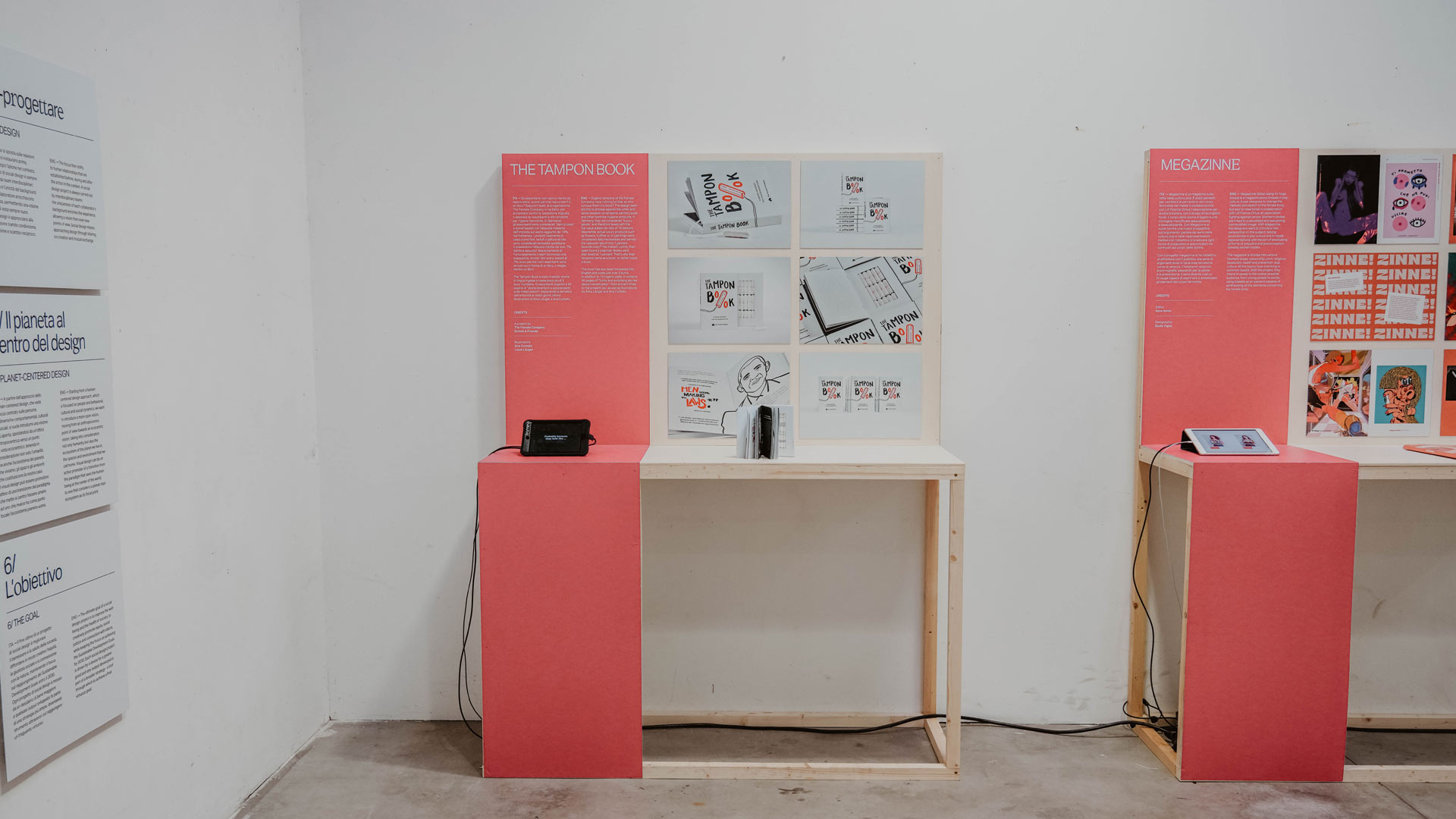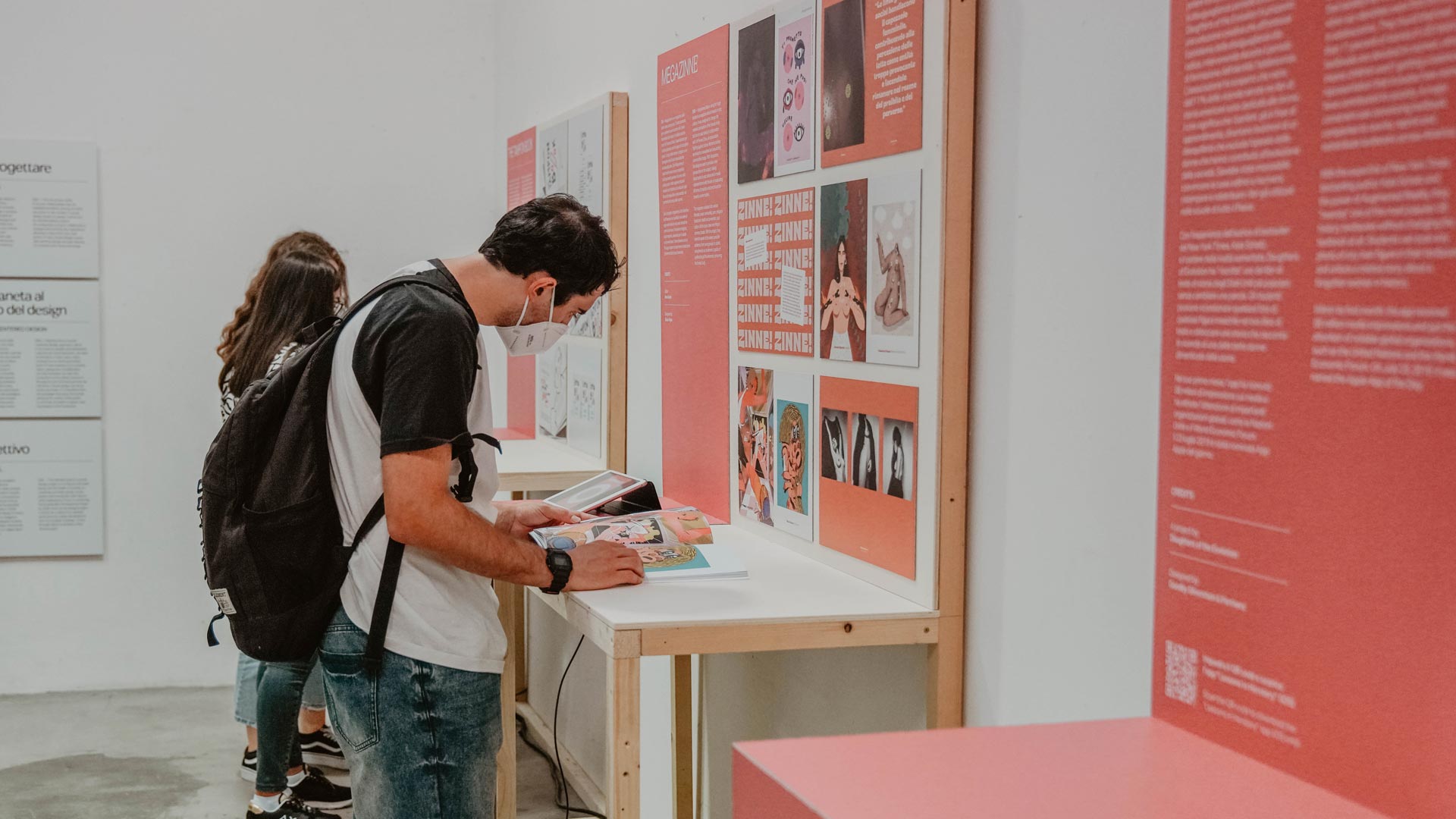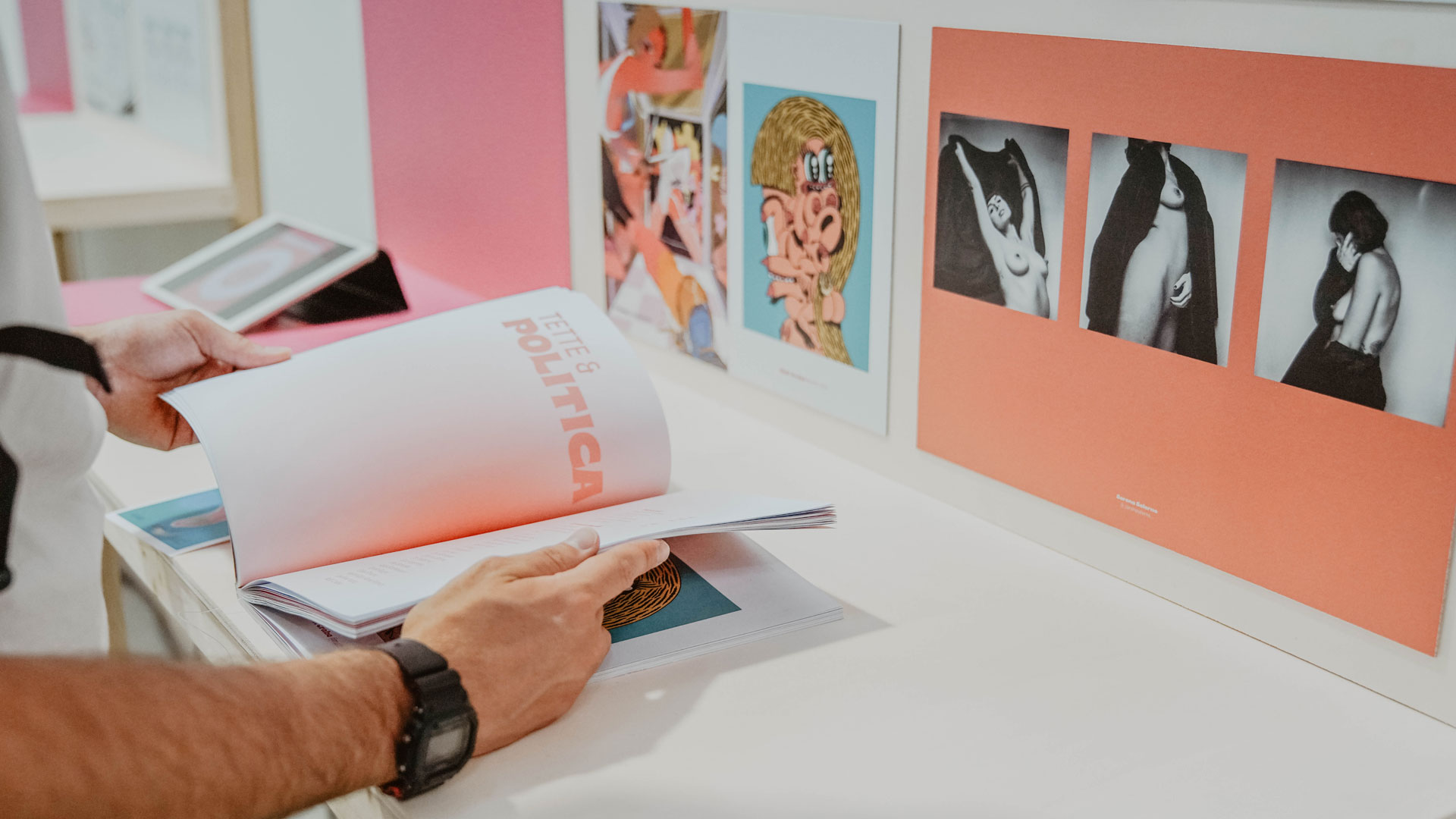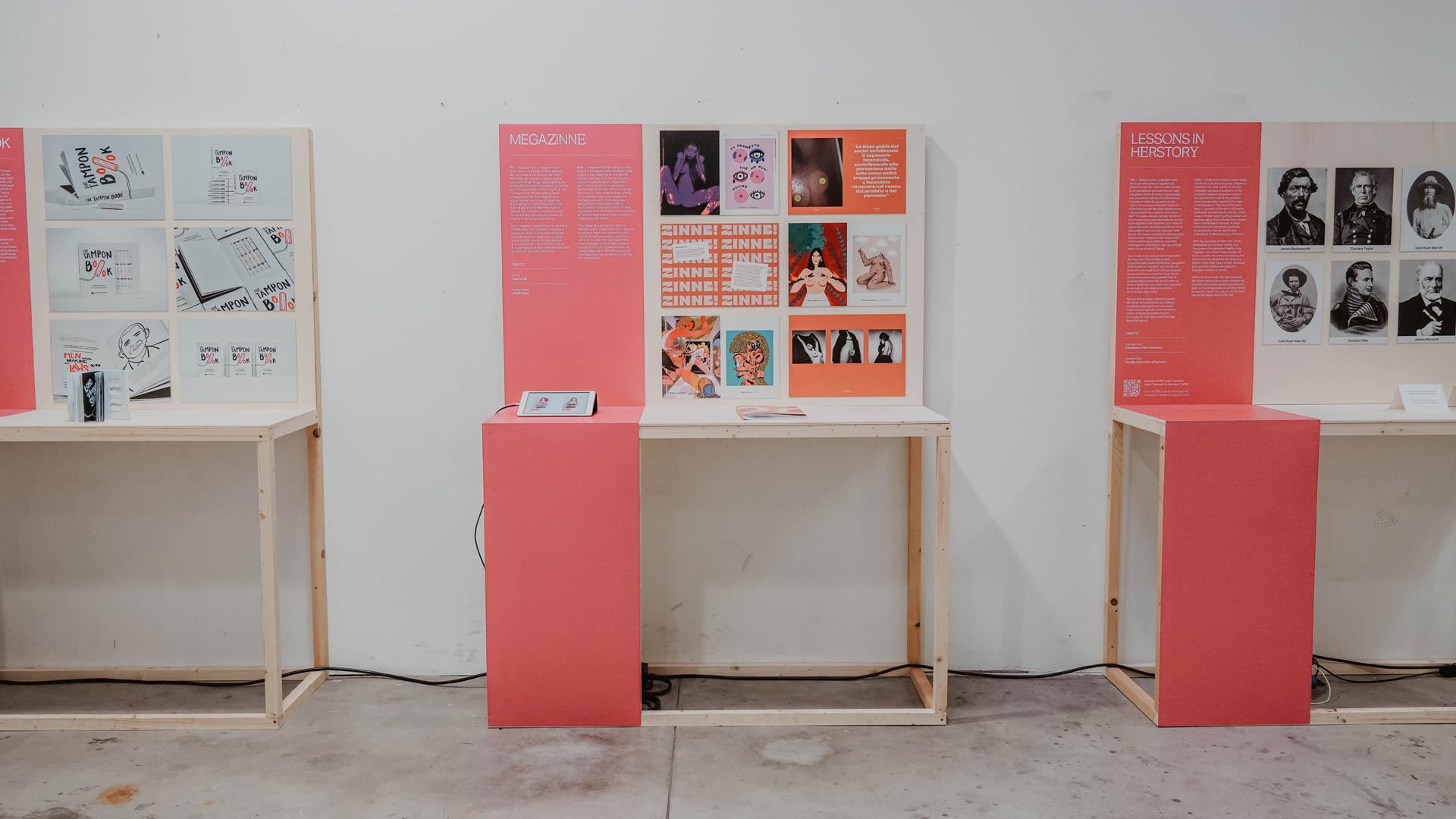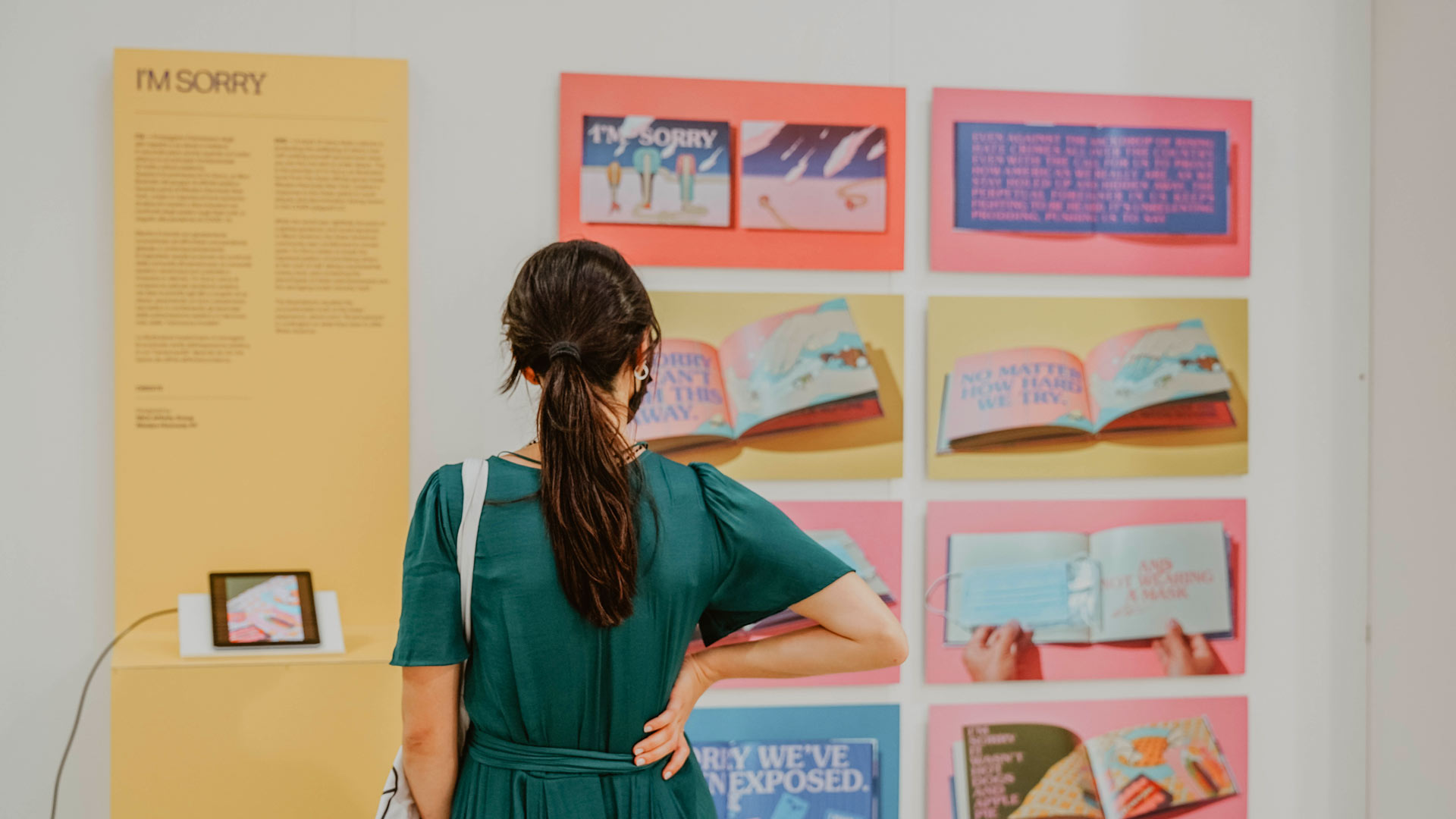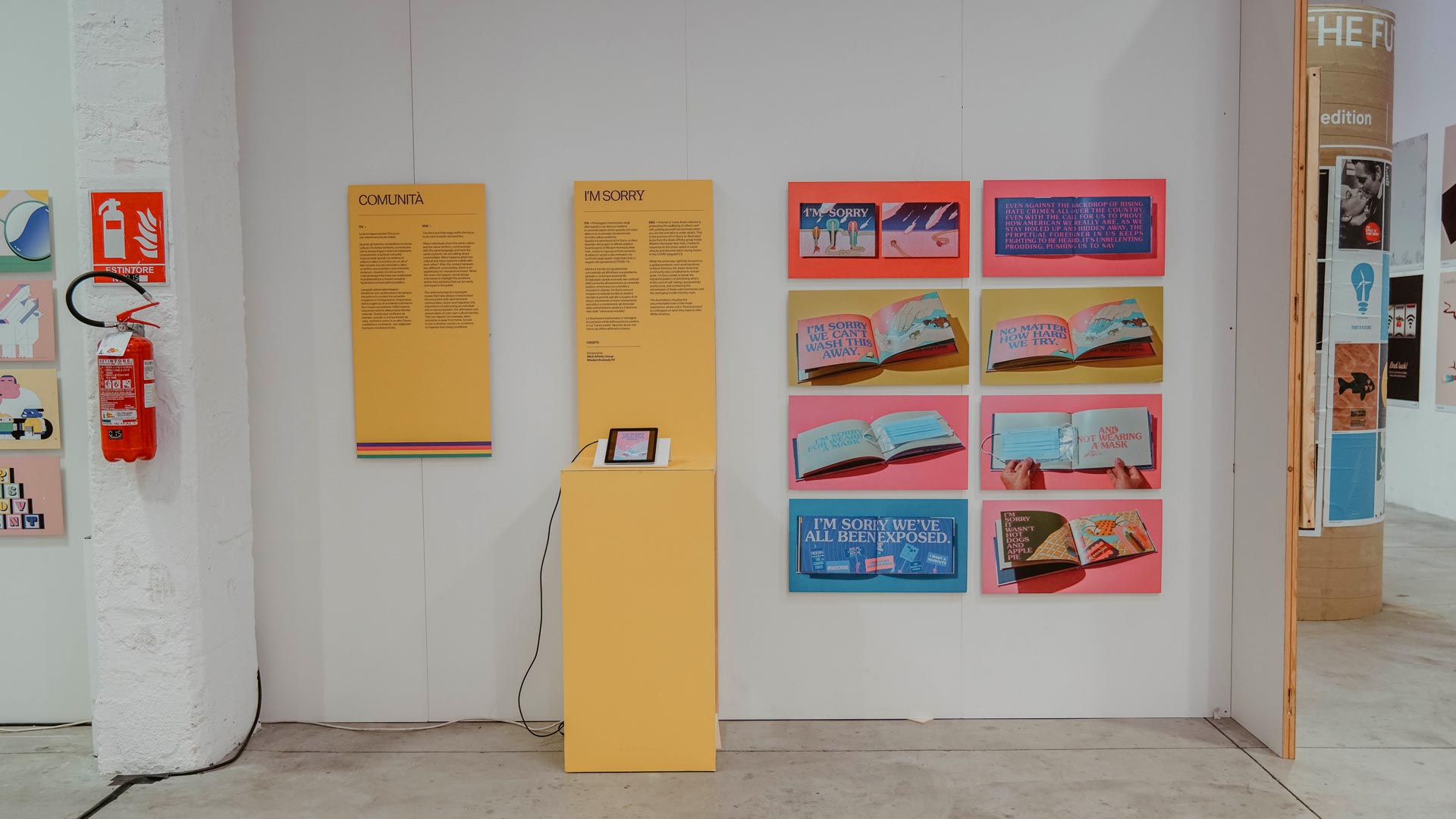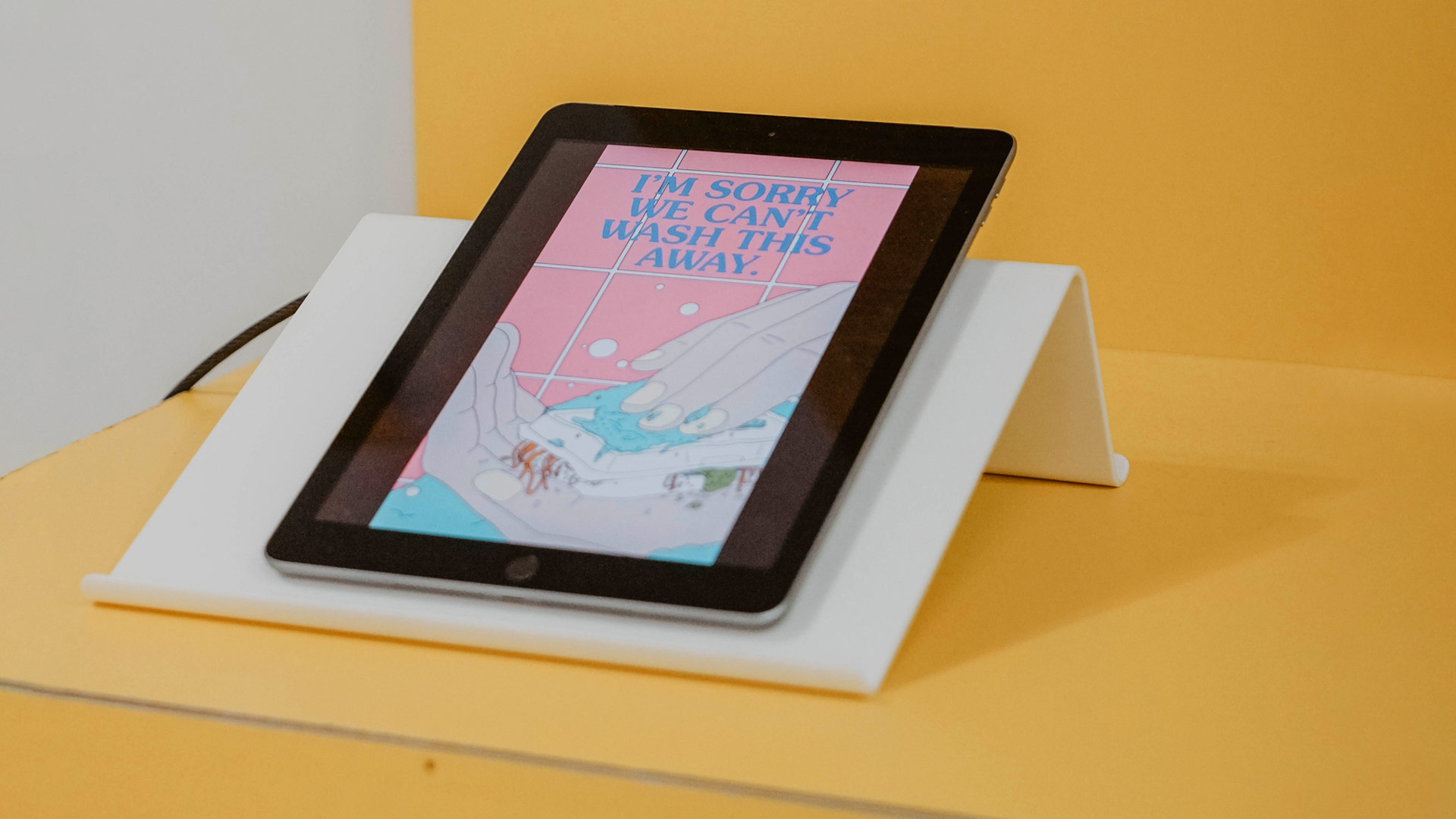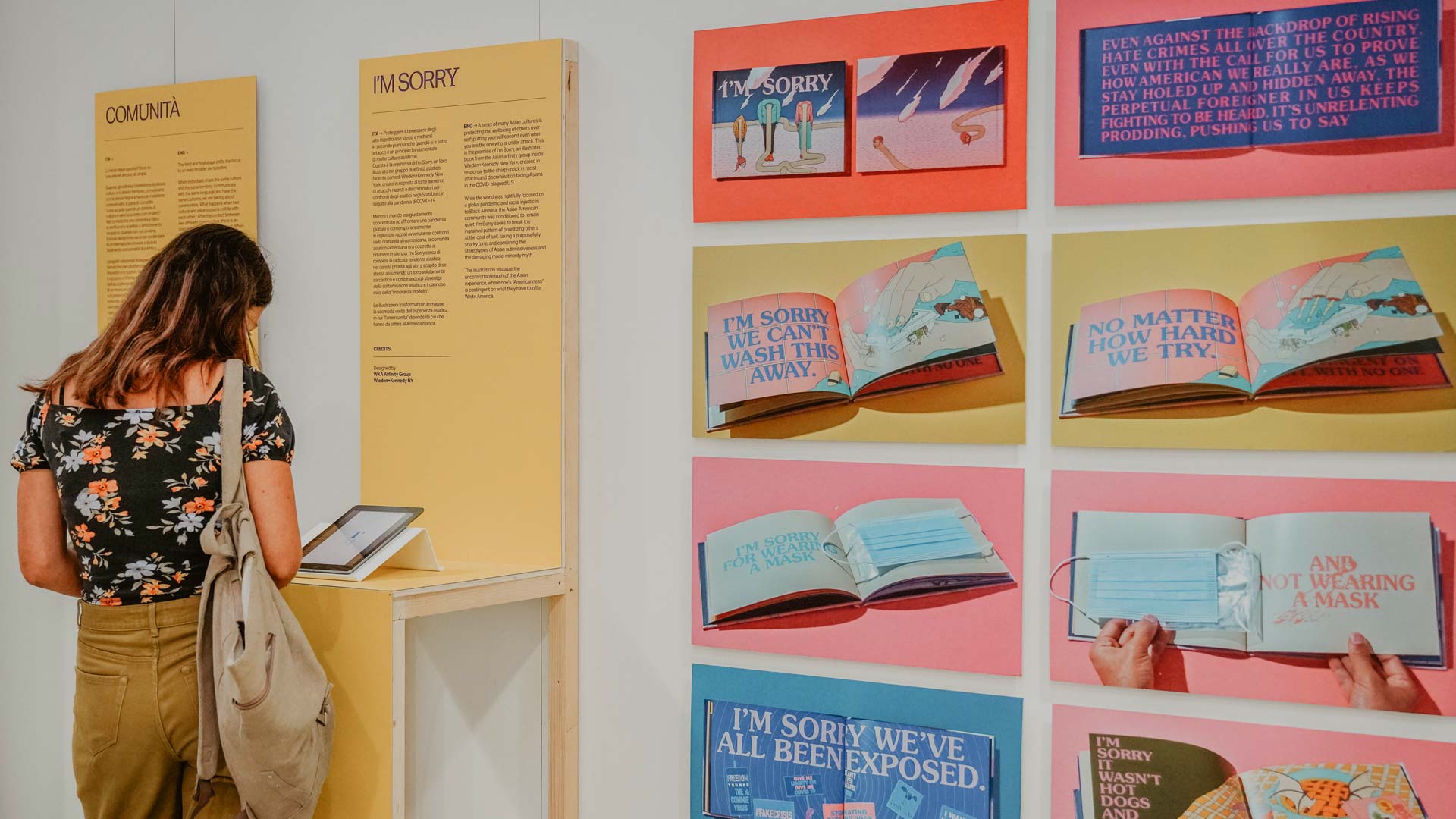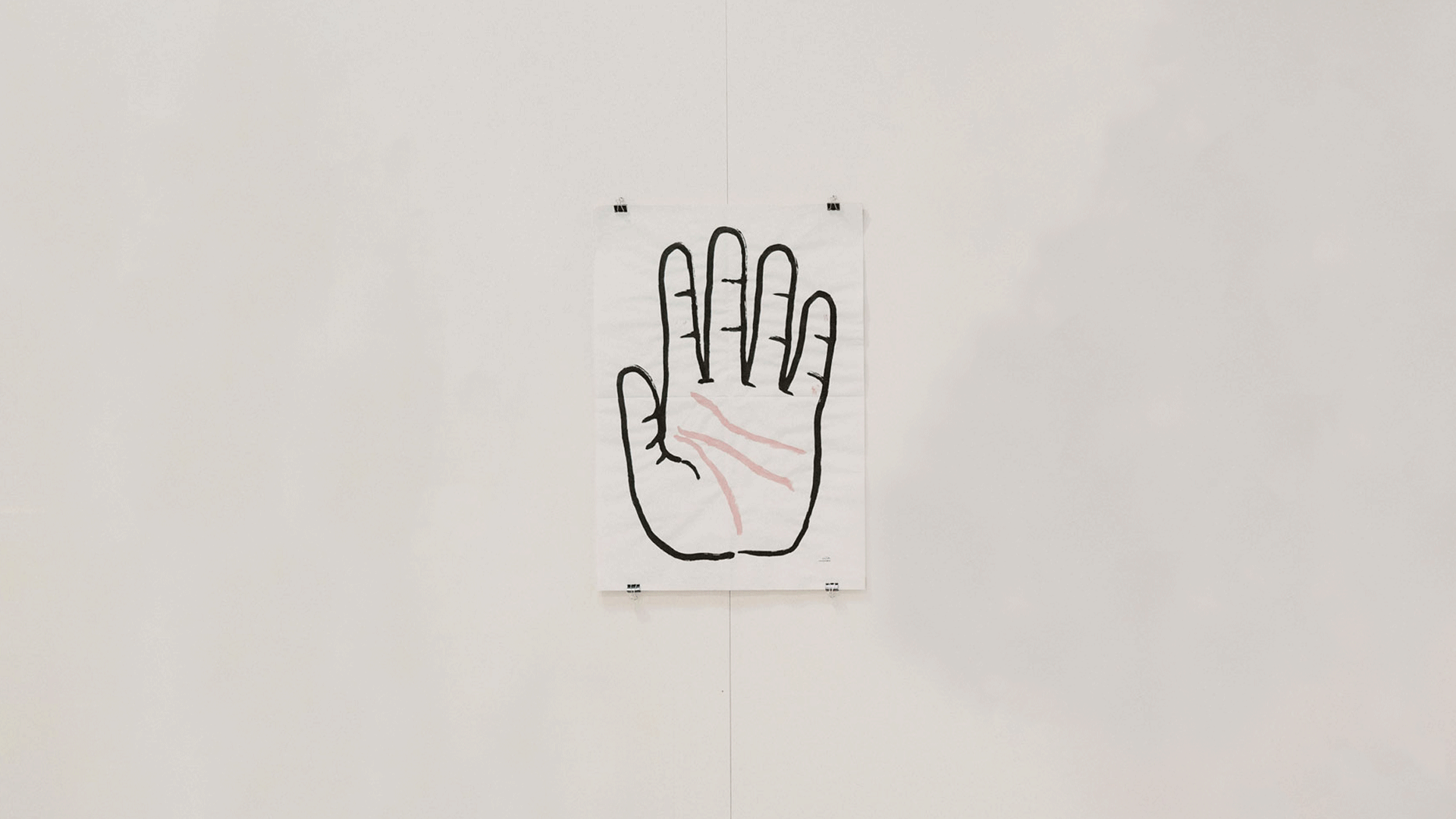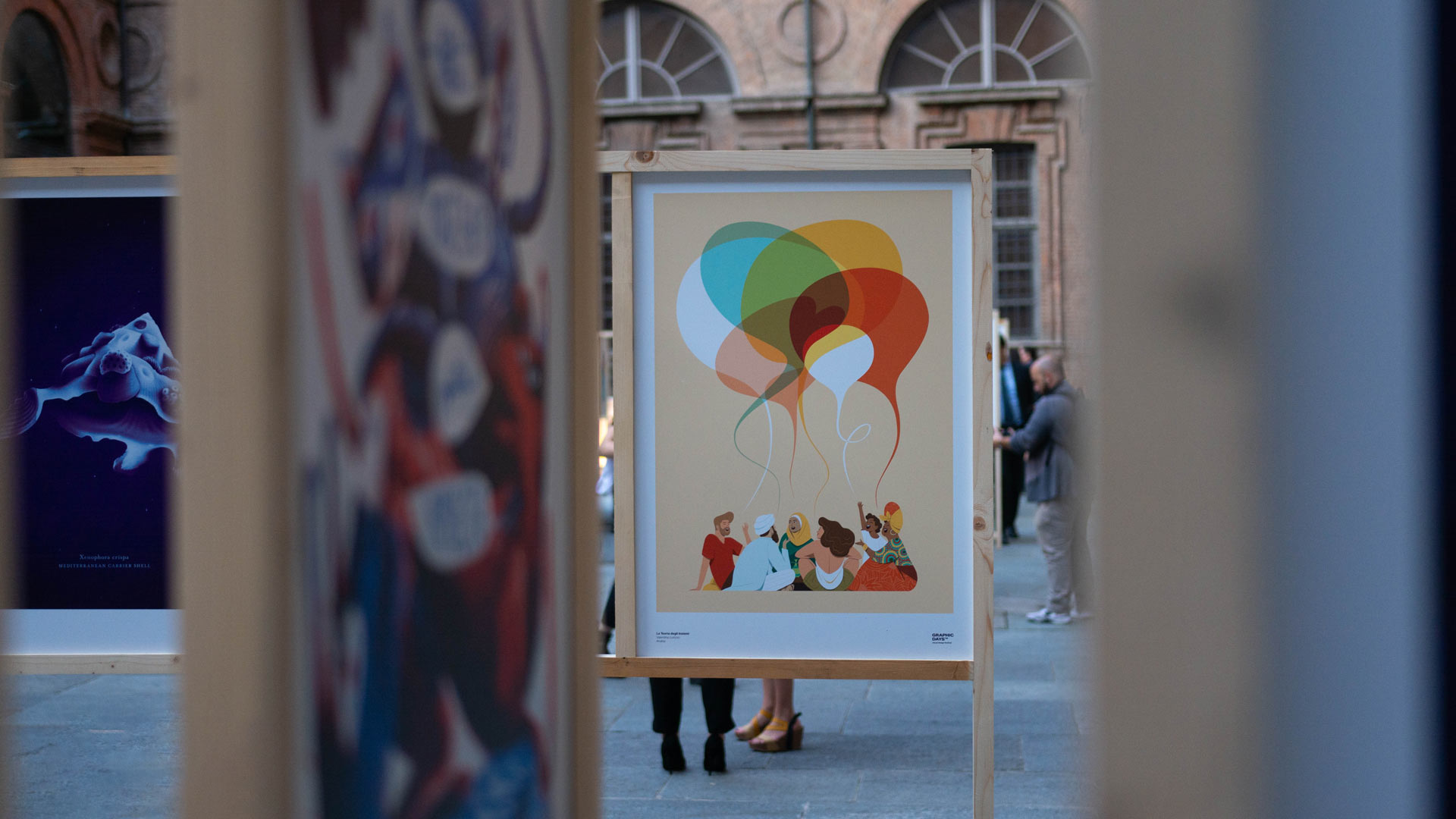An exhibition itinerary of social design projects that combine social commitment and visual communication.
We mix design and people Vol.1
16-26 settembre 2021
Exhibition
On the occasion of the sixth edition of the Graphic Days® festival we created an exhibition of social design. We mix design and people is our slogan: visual design communicates visually and immediately and reduces the distance between the message and the interlocutor; it not only conveys information but also stimulates debate and educates the public, with the aim of making the beneficiaries active and oriented to change.
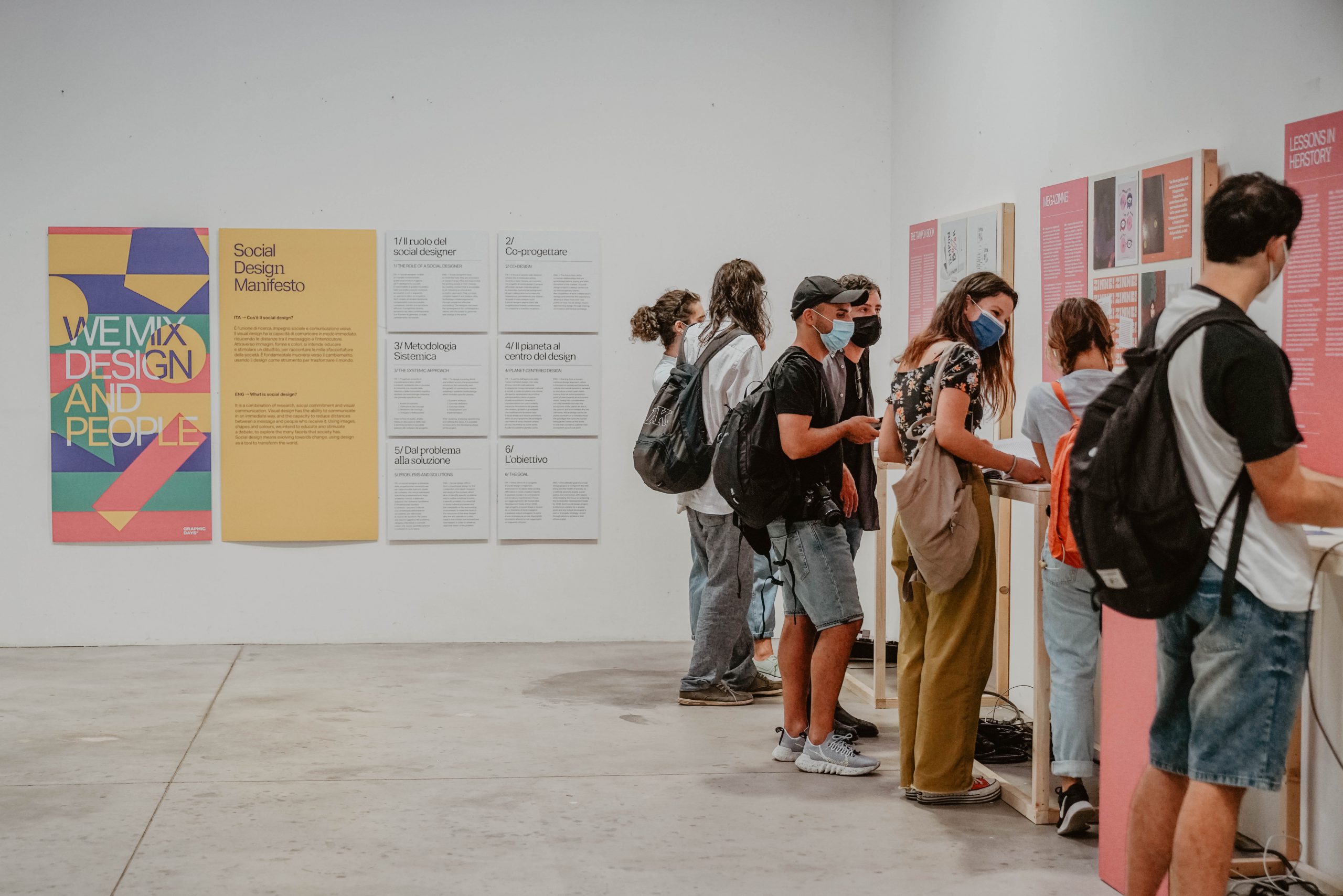
9 social design projects were included in the exhibition which, through an itinerary divided into sections, led from the individual to the community, starting from issues relating to the person, to health and to acessibility. The second level is that of relations between individuals by presenting projects relating to social and gender inequality. Finally we moved on to the community, addressing issues such as racism, immigration and cultural identity.
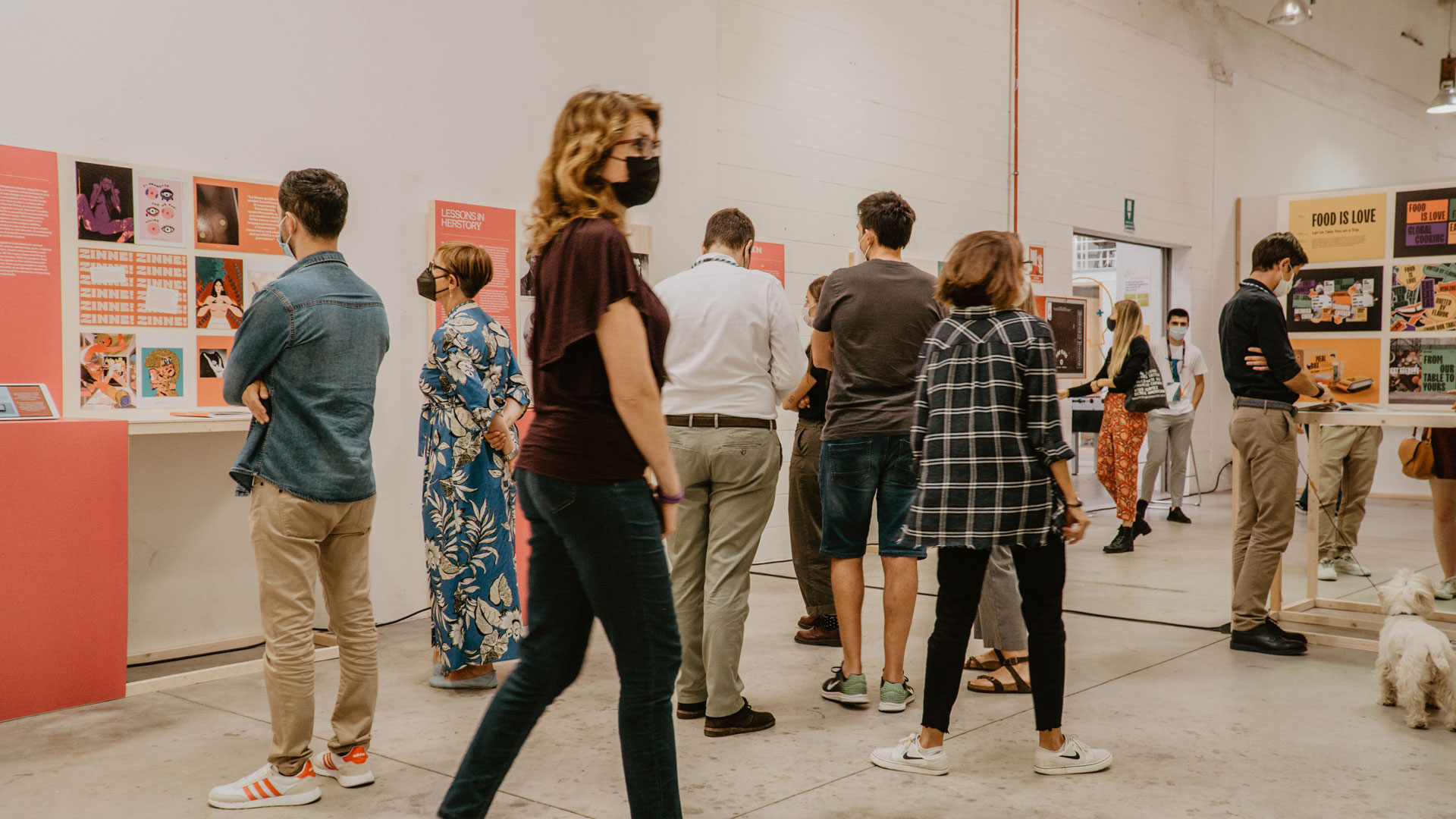
ThisAbles
A team of professional designers and therapists from Milbet-Sheba have developed a series of easy-to-assemble additional pieces to make IKEA products more accessible to people with various types of disabilities. These special additional pieces can be printed using a classic 3D printer without having to ask for permission. As this is an open-source project, the models can be downloaded for free on line
A project of Milbat Technology Assisted Living and IKEA Israel.
Cystinosis – A rare disease
Cystinosis is a rare genetic disorder caused by the accumulation of lysosomal. Unfortunately, cystinosis often affects very young children. Musclebeaver (Andreas Kronbeck and Tobias Knipf / Munich, Germany) have developed a video for the Chiesi group to encourage young patients affected by the disease to take the medicine essential for survival regularly.
Fingerspelling
A web-app that uses a webcam and machine learning to analyze the shapes of hands so that anyone can learn the signs of the ASL (American Sign Language) in a fun way. The game proposes a series of words and the computer shows a 3D model of how to position the hands for each letter. When you indicate a letter, the camera tracks your hand movements and provides feedback so you can make any necessary corrections. This helps to develop “fingerspelling” skills quickly in order to progress to the next level.
Agnosis Collection
Agnosia, one of the disorders due to the onset of Alzheimer’s is the inability to recognize objects, even the simplist and most common, such as a clock, a book, a fork. The European Brain Research Institute “Rita Levi-Montalcini” in collaboration with the communication agency Super-Humans, has decided to raise public awareness on this cognitive-behavioral disorientation by making ordinary people experience what it feels like to have in their hands an indecipherable object: a collection of apparently familiar but meaningless objects made with 3D printers and with the most disparate names was created and inserted in the aisles of a supermarket as if they were common objects for sale.
Lessons in Herstory
Fewer than 11% of the events narrated in American history books are dedicated to women, which means that children, already in the learning phase, become witnesses of an imbalance that excludes the work of women who have contributed to the evolution of society. With the expertise of the New York Times bestselling author Kate Schatz and the power of augmented reality, Daughters of Evolution in partnership with Goodby Silverstein & Partners has “rewritten” one of the most popular U.S. History textbooks. Students can scan any photo of a male figure in the volume and open a story that tells the experiences of one of the many women forgotten by history.
The Tampon Book: A Book Against Tax Discrimination
Sanitary towels and other feminine hygiene products are considered a “luxury item” in Germany and are therefore taxed at the maximum rate. To protest against this unfair and sexist taxation the design team of The Female Company together with Scholz & Friends has hidden tampons in a book, an object that benefits from the reduced tax rate. The Tampon Book contains 15 organic pads and 46 pages of “funny and surprising stories about menstruation”.
Megazinne
Megazinne is a magazine about “boobs” in pop culture that talks about how breasts are treated in media representations, with the aim of eradicating all forms of prejudice and preconception towards a woman’s body. It was created in collaboration with Lilt Firenze Onlus, the association for the fight against cancer and to raise funds.
I’m Sorry
An illustrated book produced by the Asian affinity group of Wieden+Kennedy New York, created in response to the sharp increase in racist attacks and discrimination against Asians in the United States following the advent of the COVID-19 pandemic. I’m sorry tries to break the deep-rooted Asian tendency to prioritize others at the expense of themselves, assuming a deliberately sarcastic tone and combining the stereotypes of Asian submission and the harmful myth of the “model minority”, namely the “successful” target group.
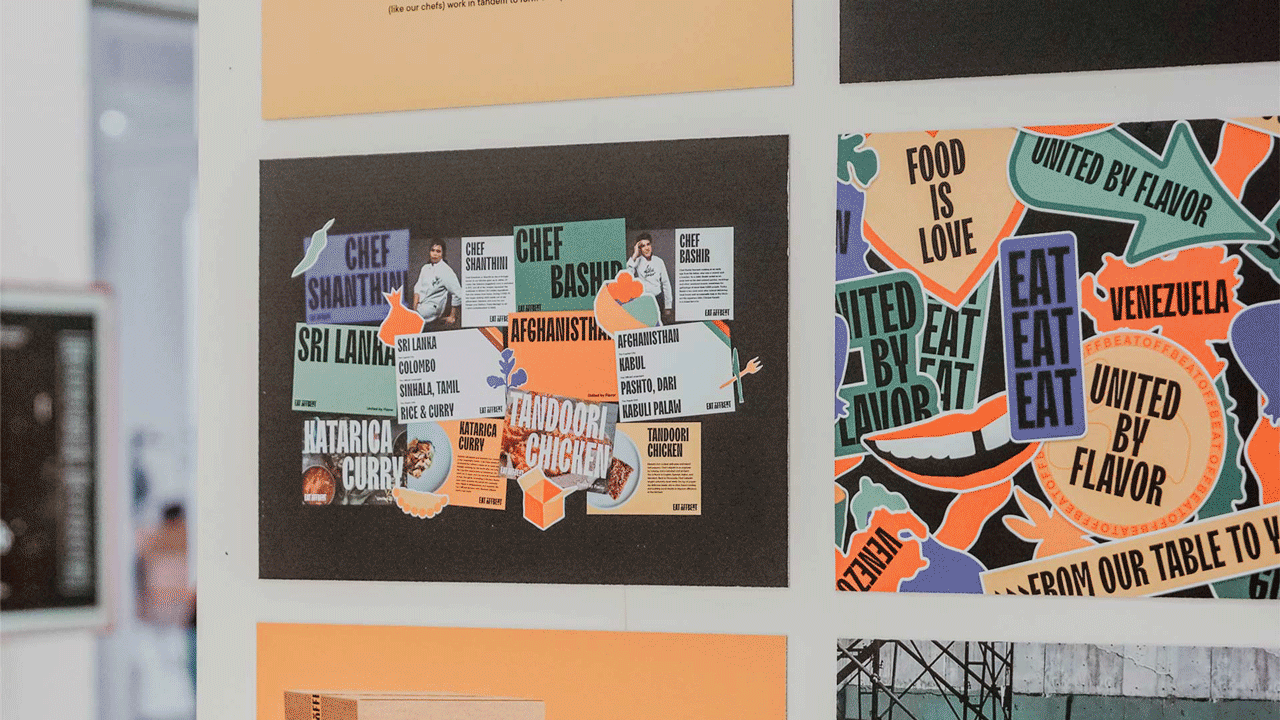
Eat Offbeat
Eat Offbeat is a food company with a strong social impact that offers catering and ready meals made by former refugees and immigrants in New York, who share the food traditions and culture of their home countries by becoming chefs. The company works with the International Rescue Committee (IRC) and the New York Immigration Coalition to find and recruit talented domestic cooks, without requiring any previous professional experience. Natasha Jen and her Pentagram team have developed a visual identity and branding strategy for Eat Offbeat that reflect her mission and the bold flavors of her cuisine.
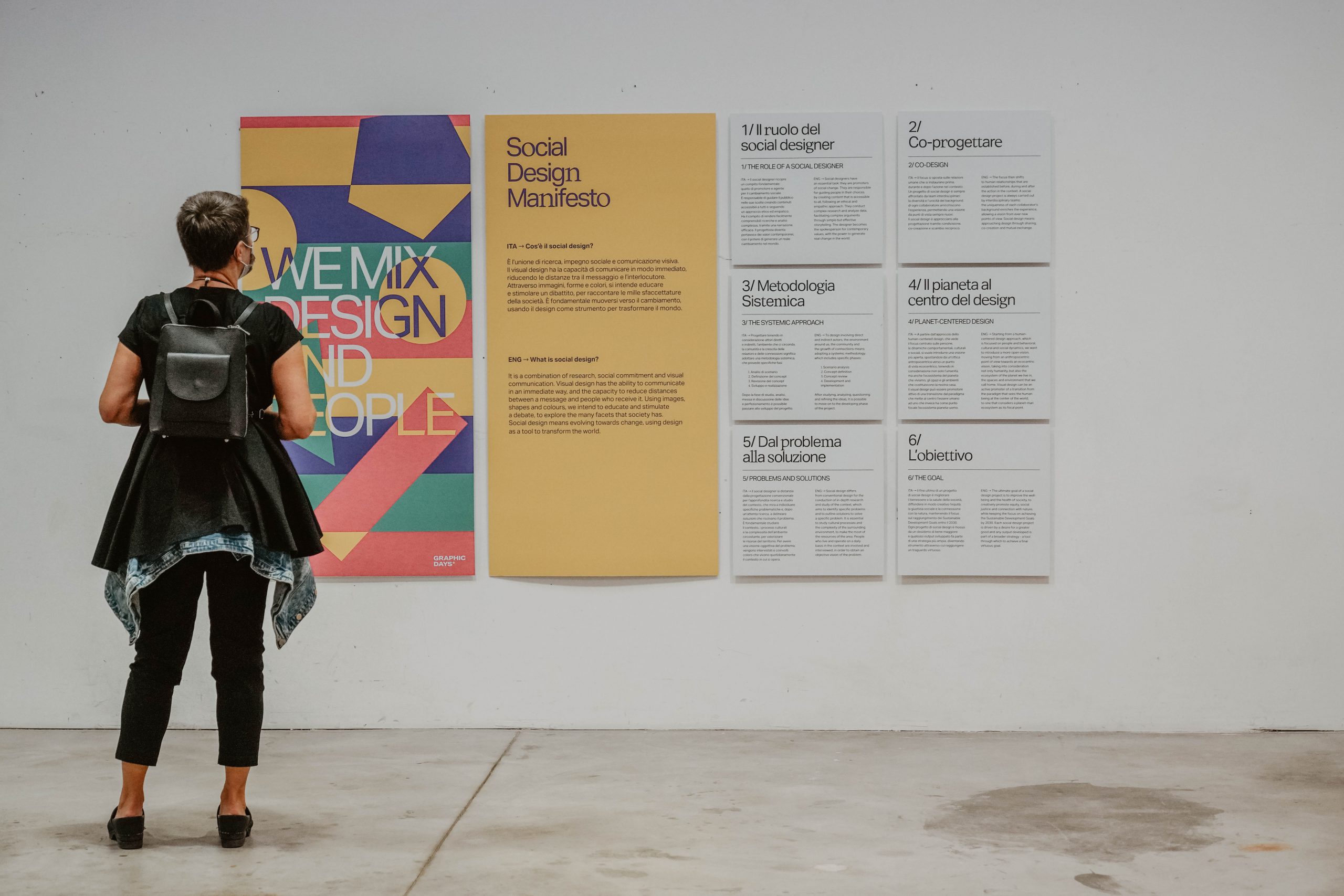
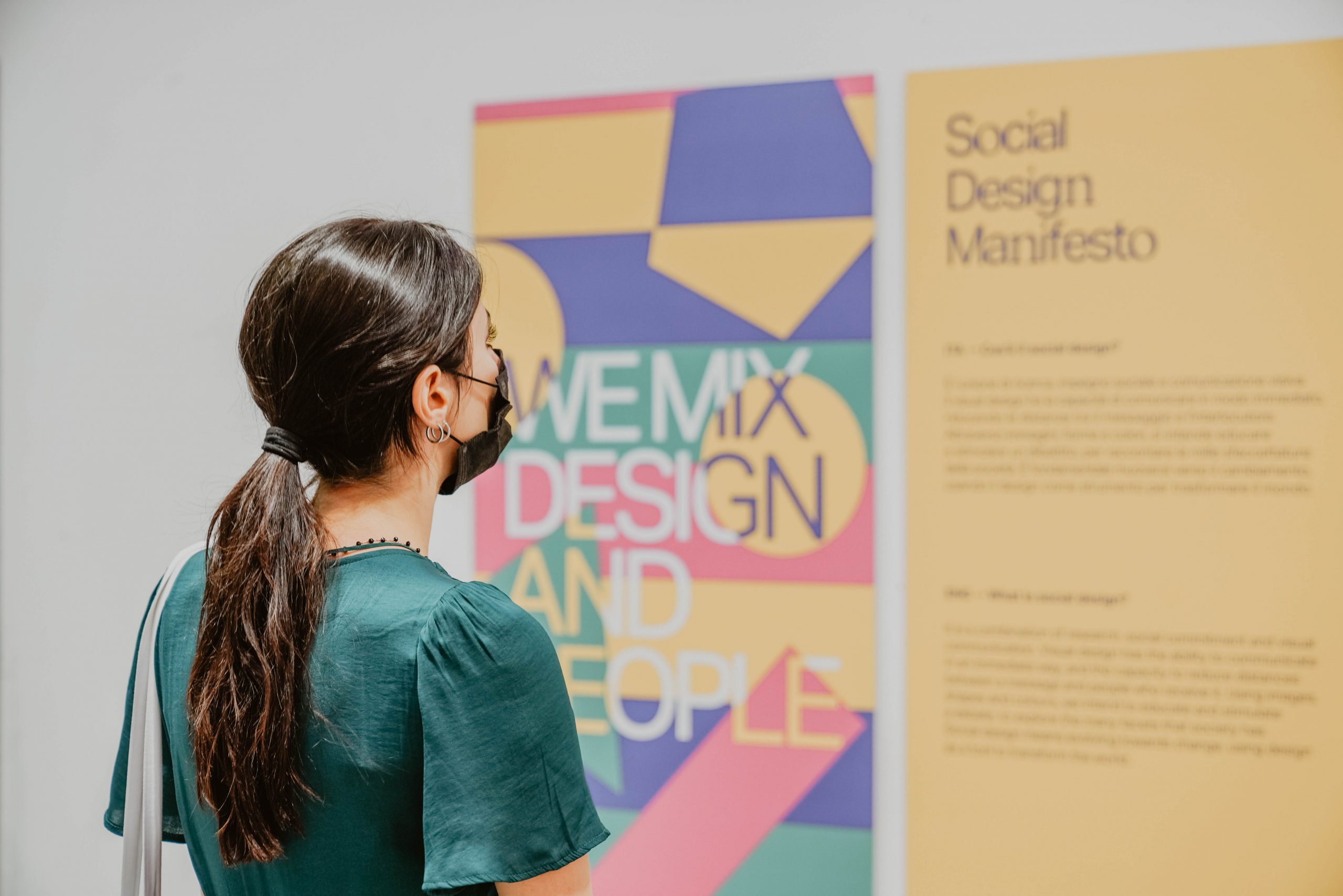
Altri progetti

